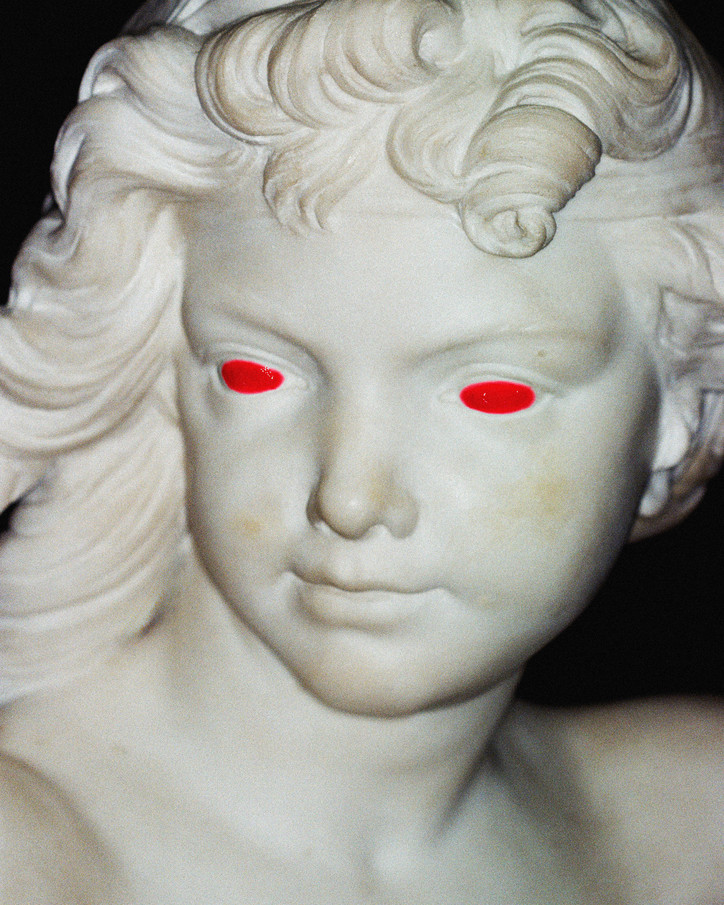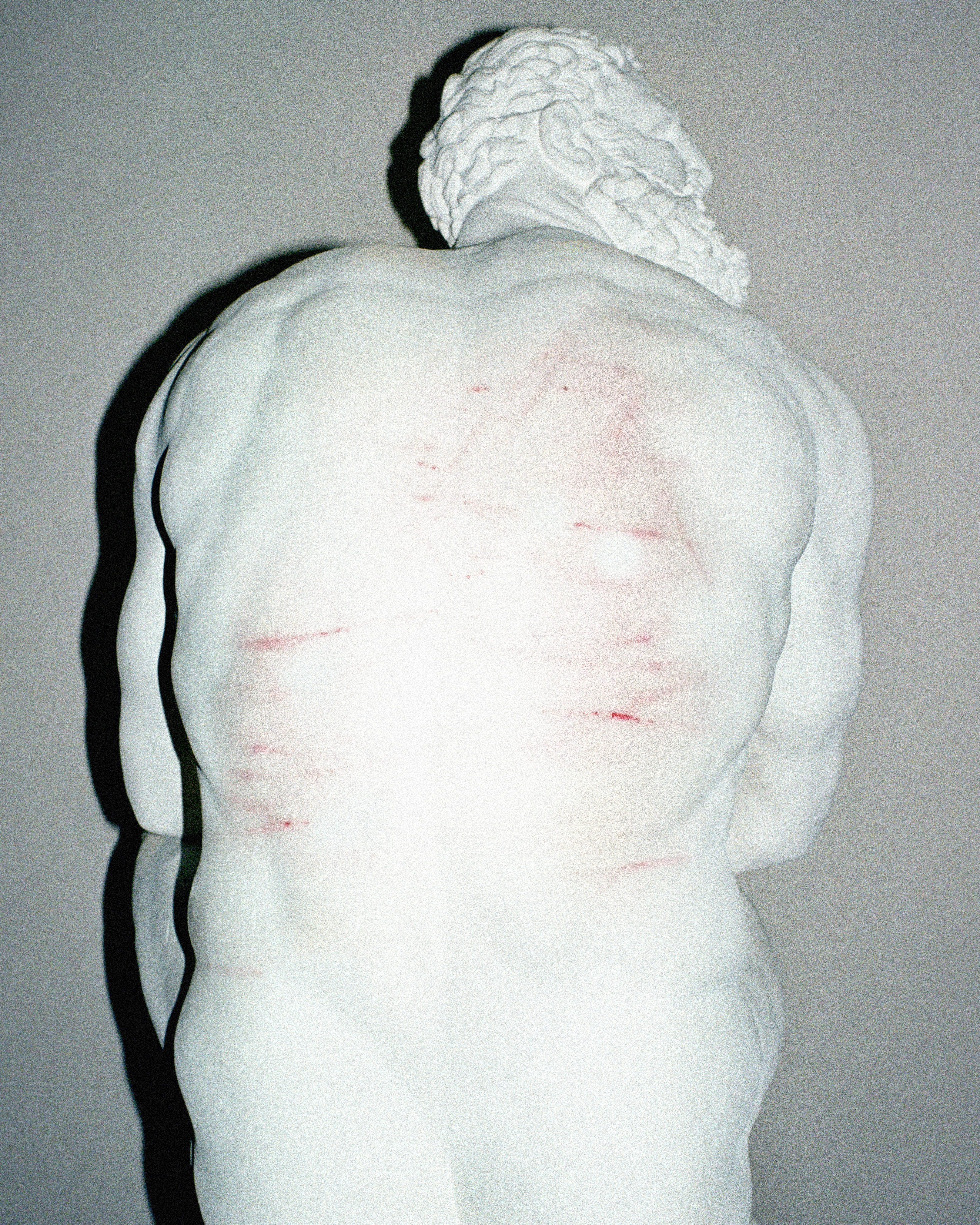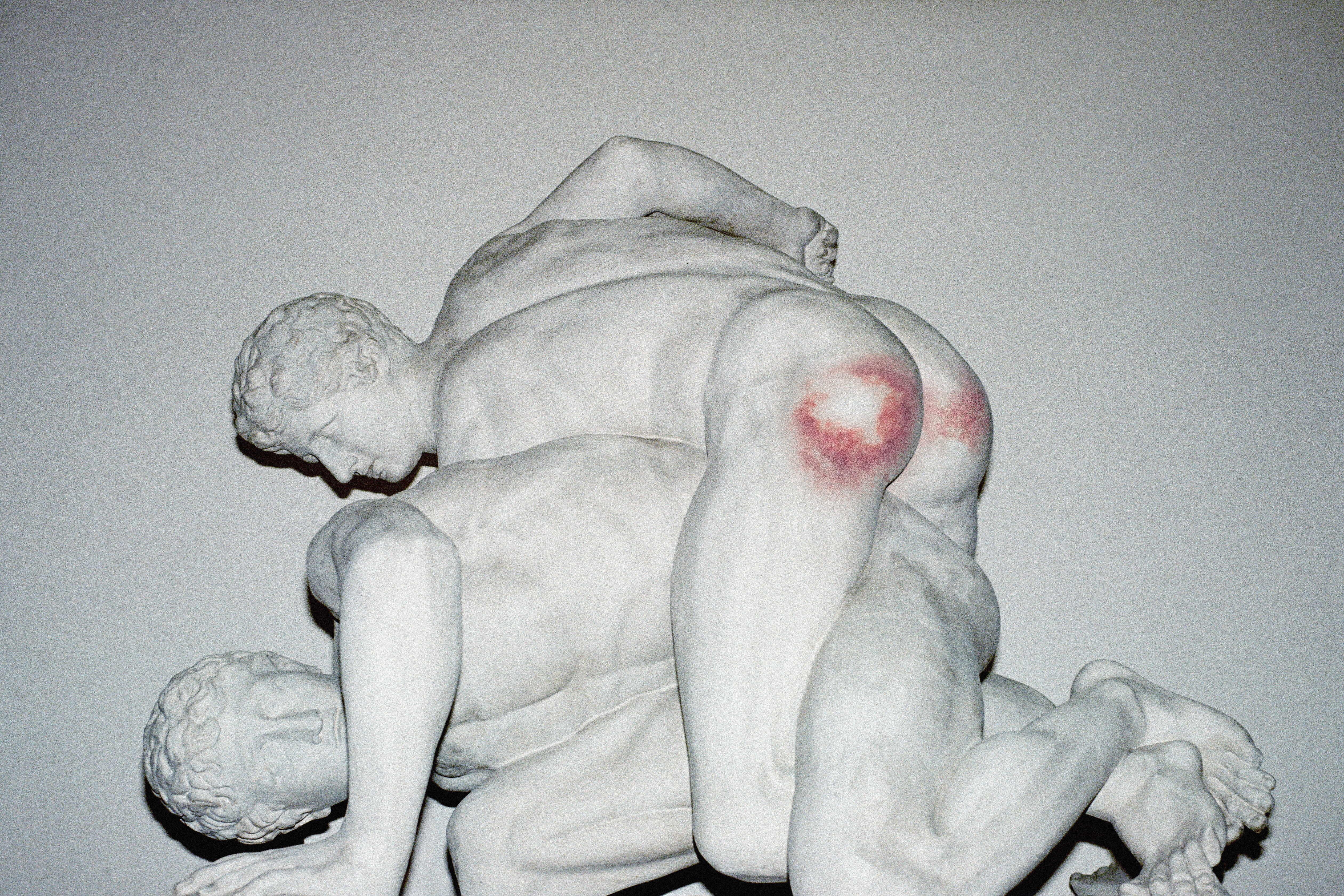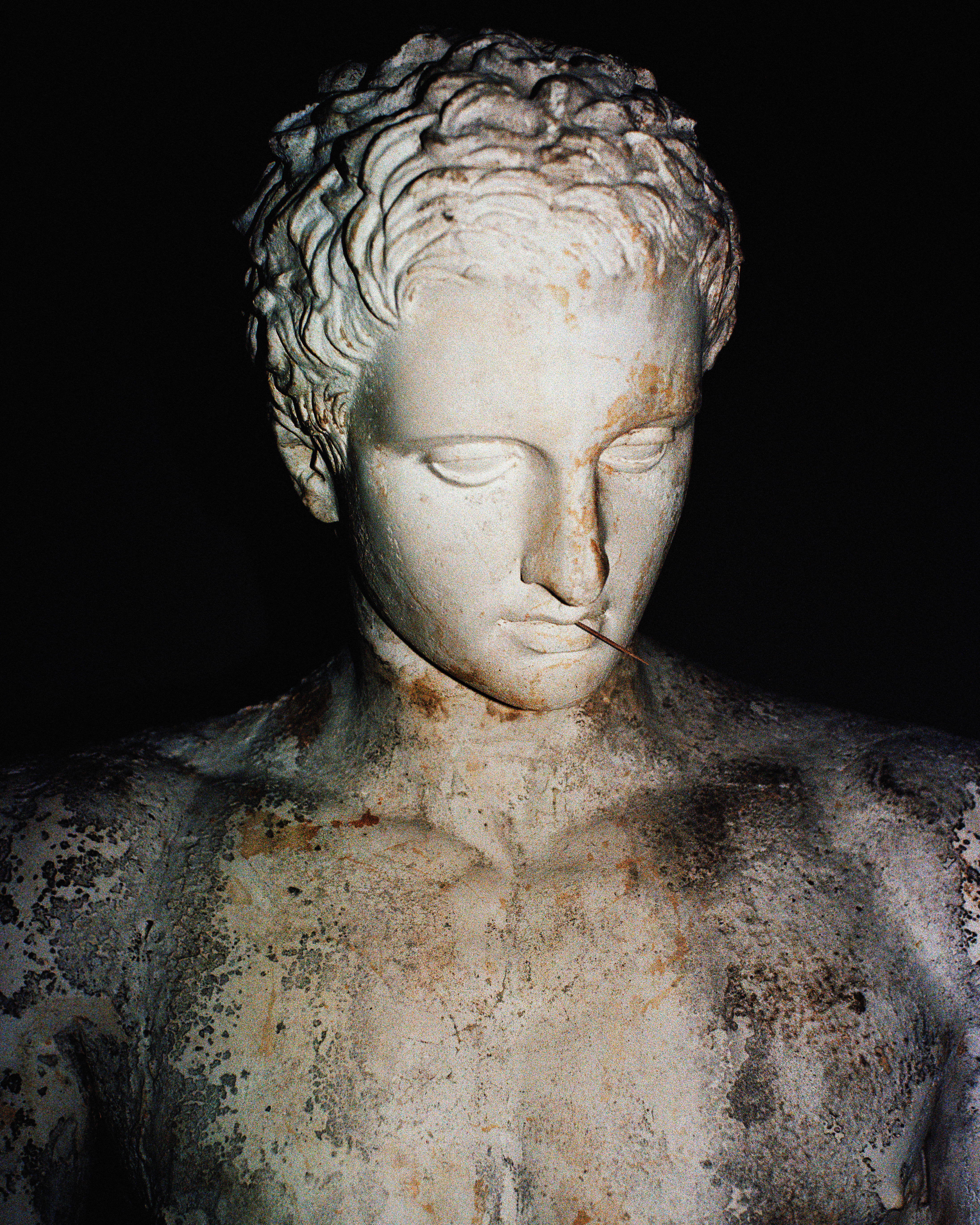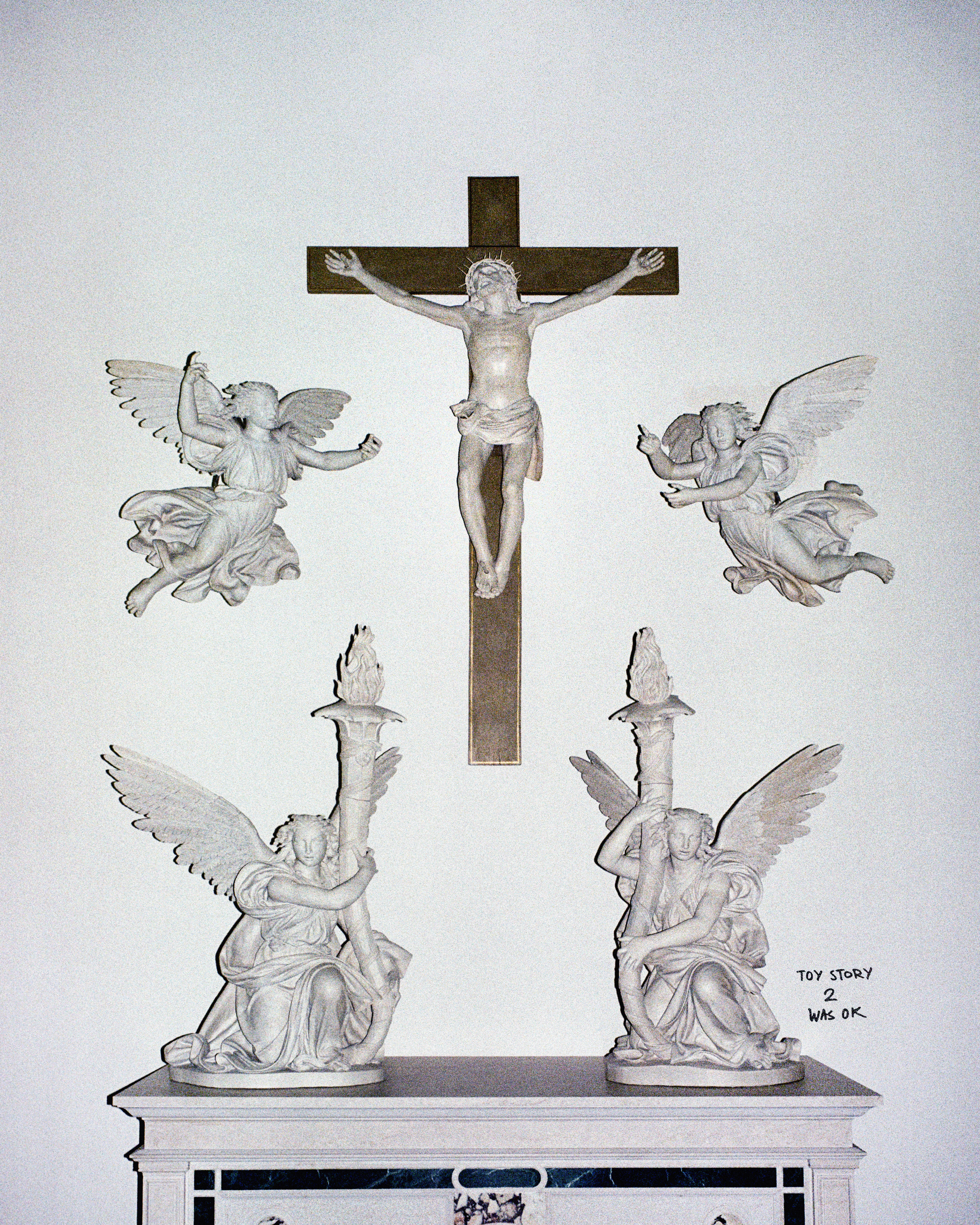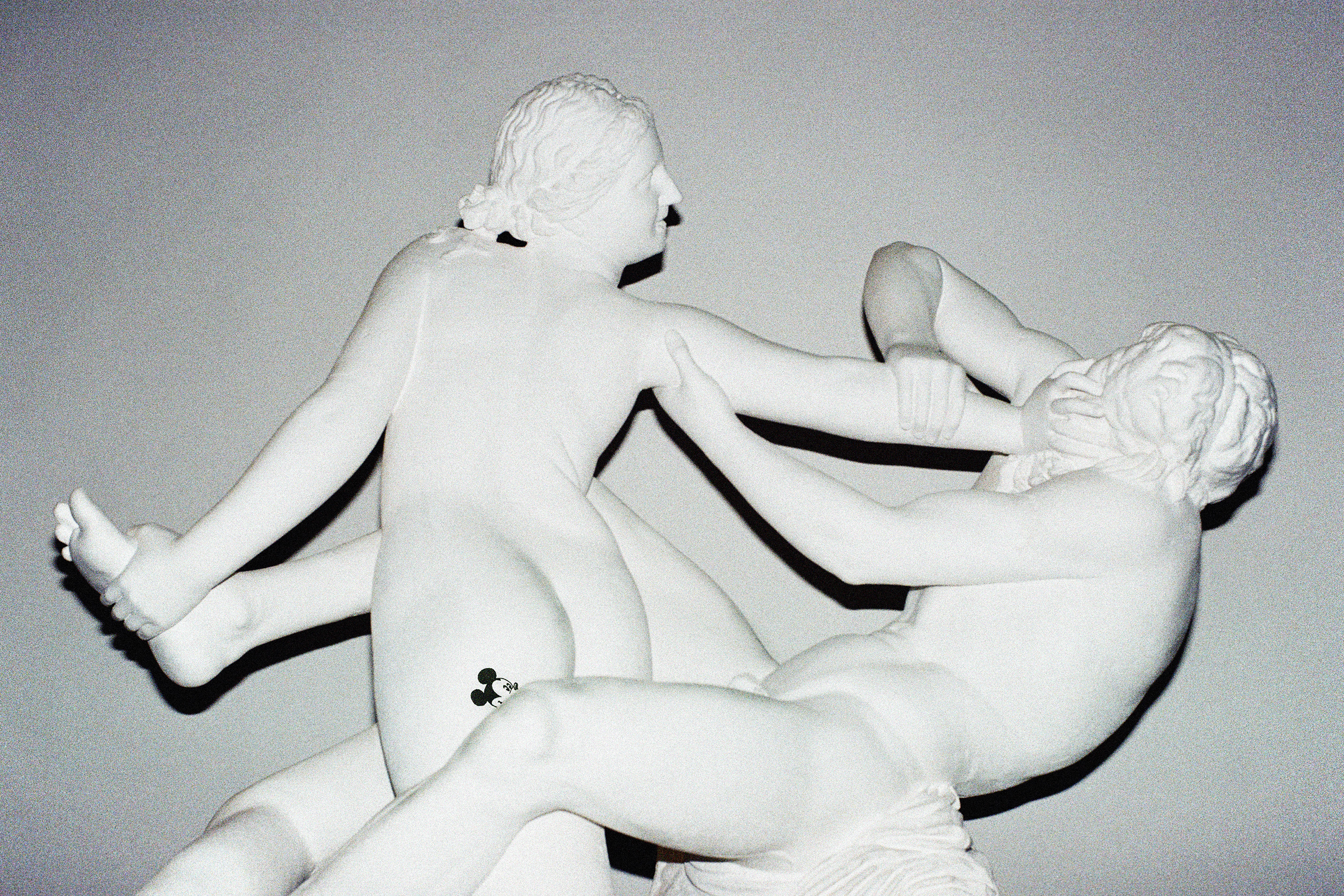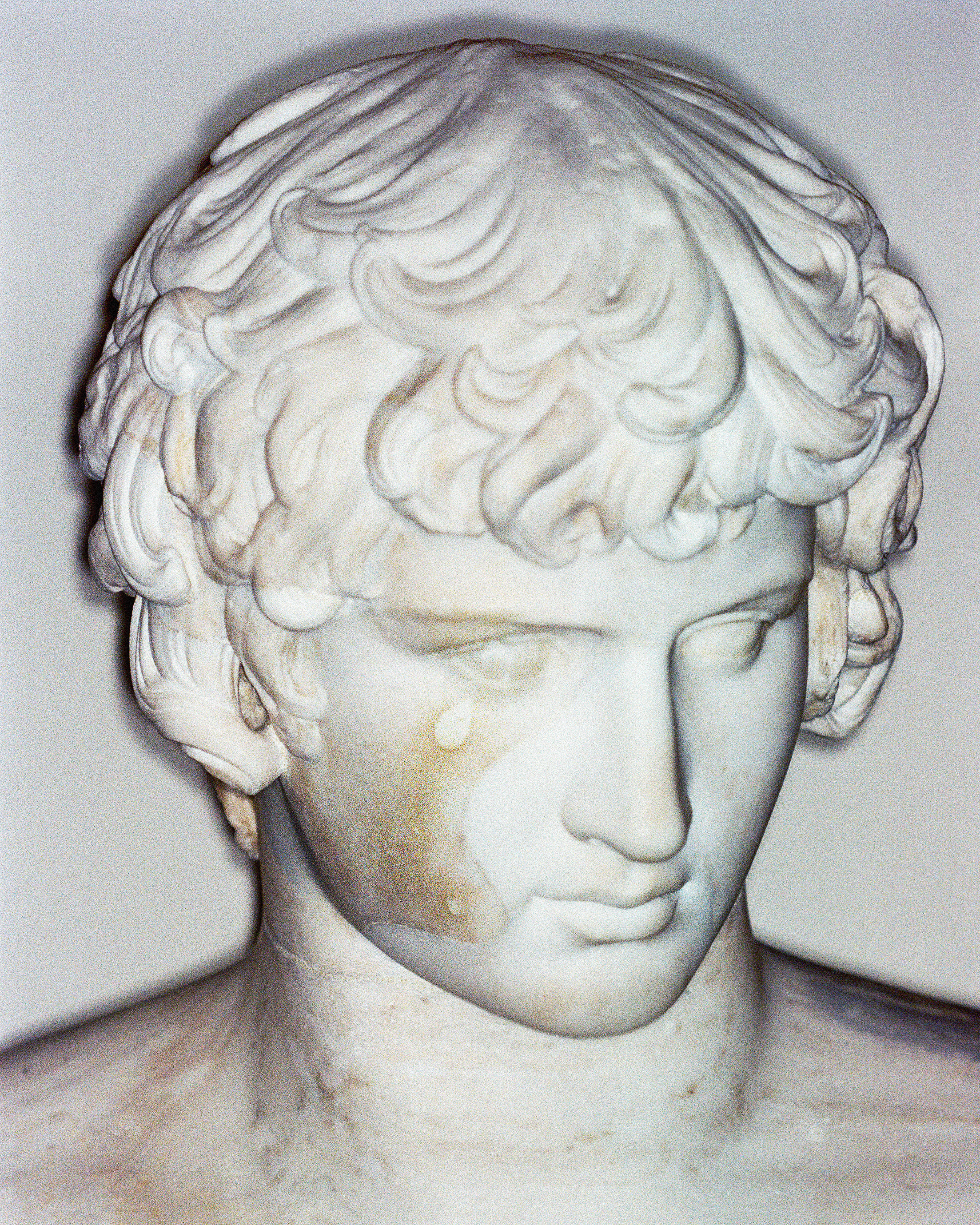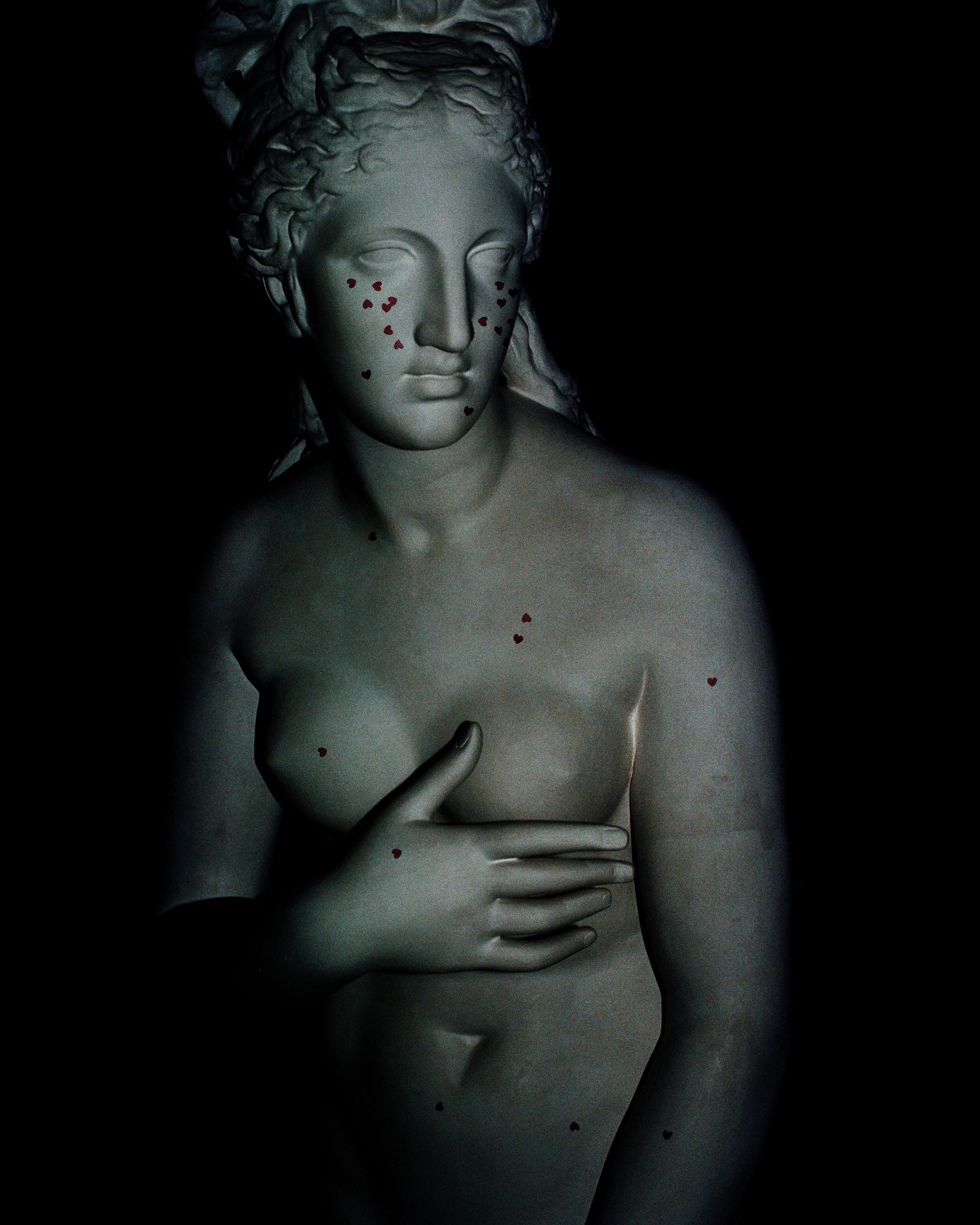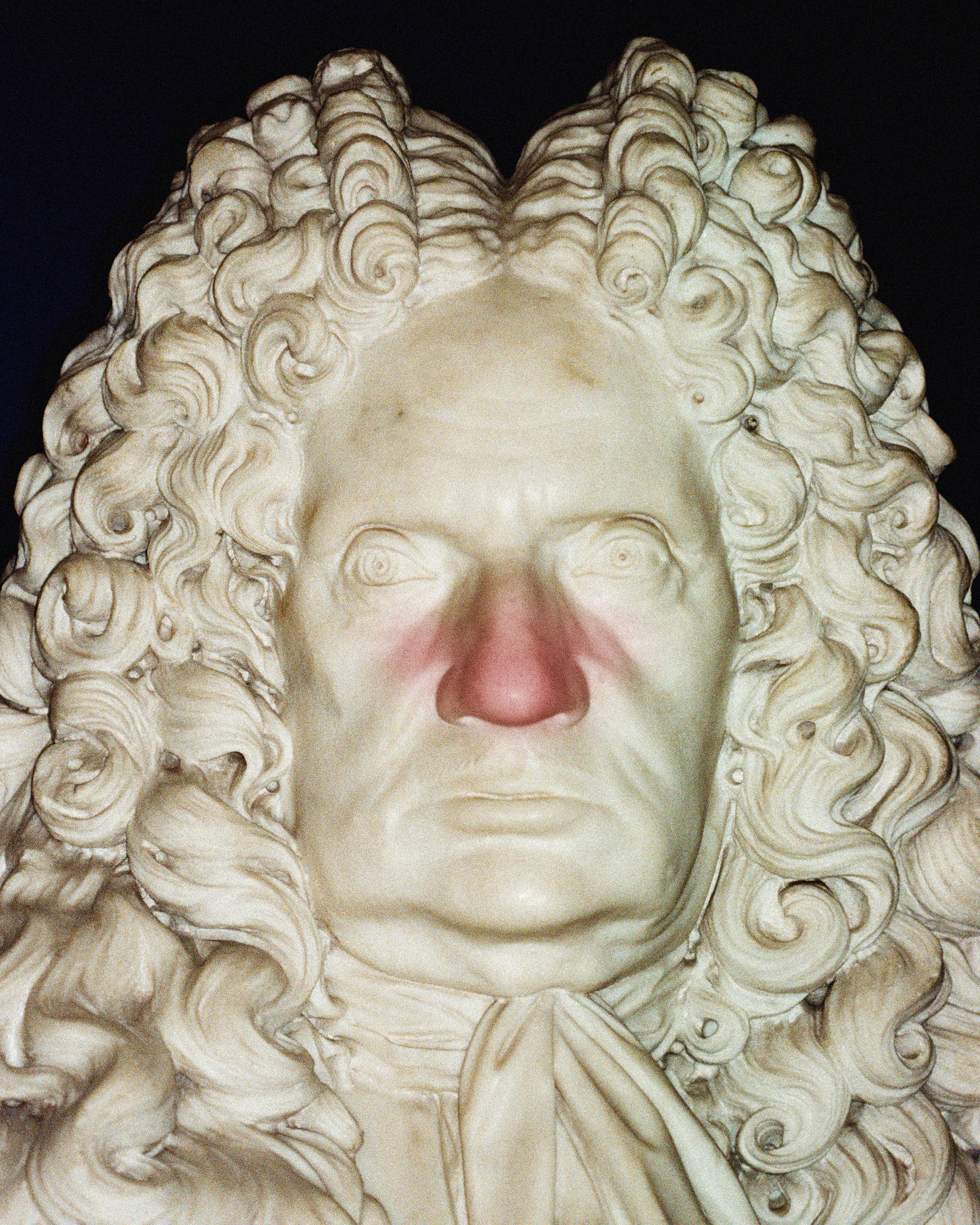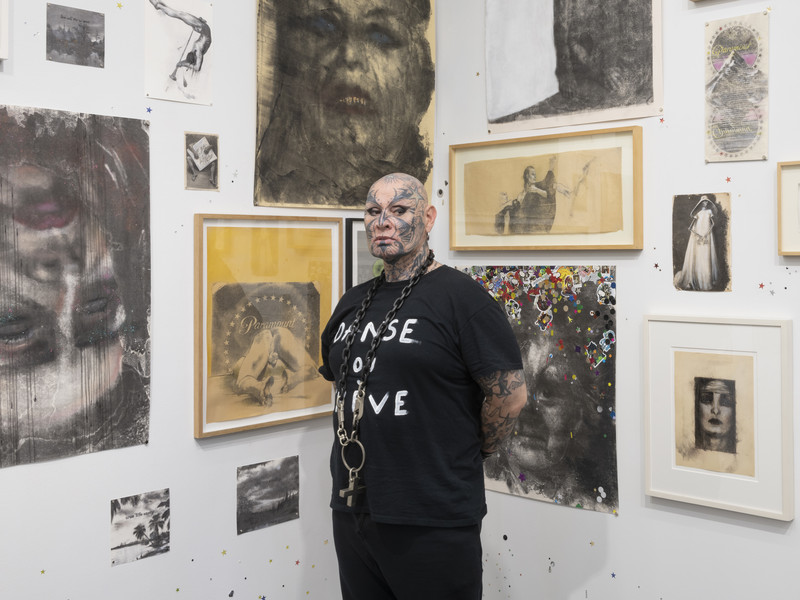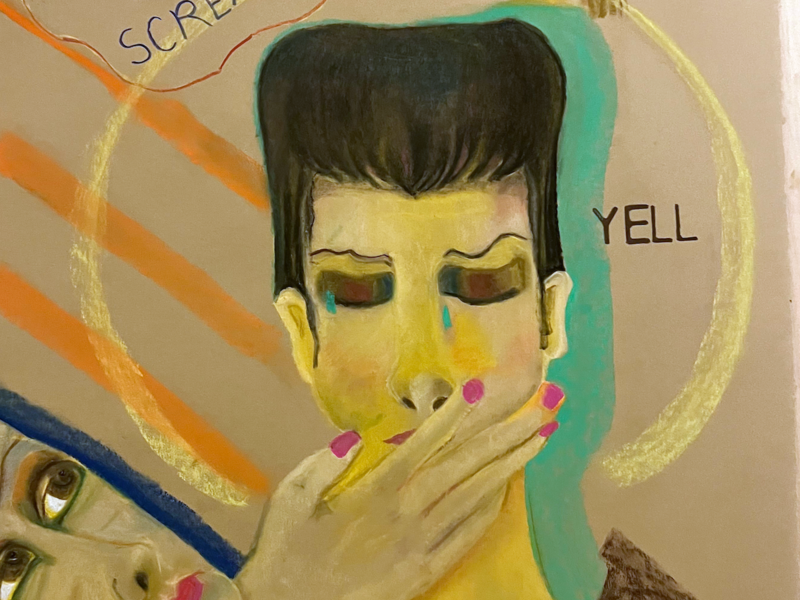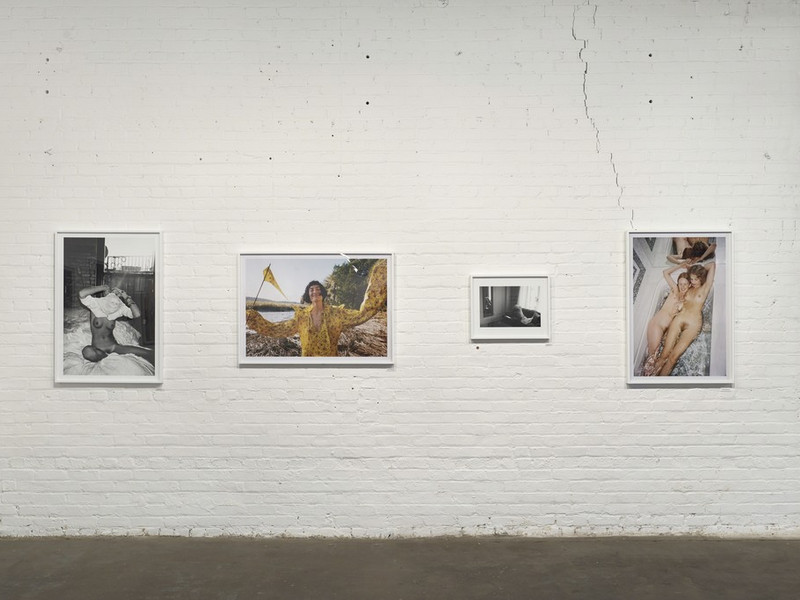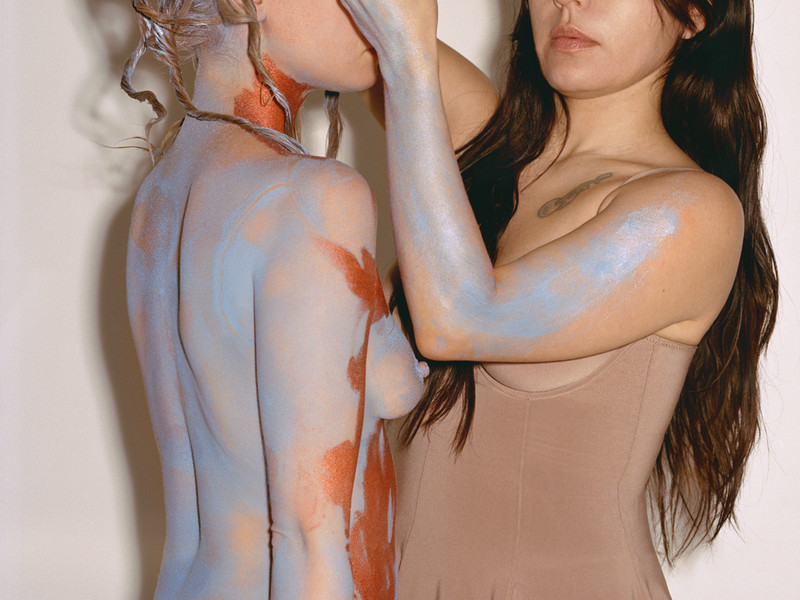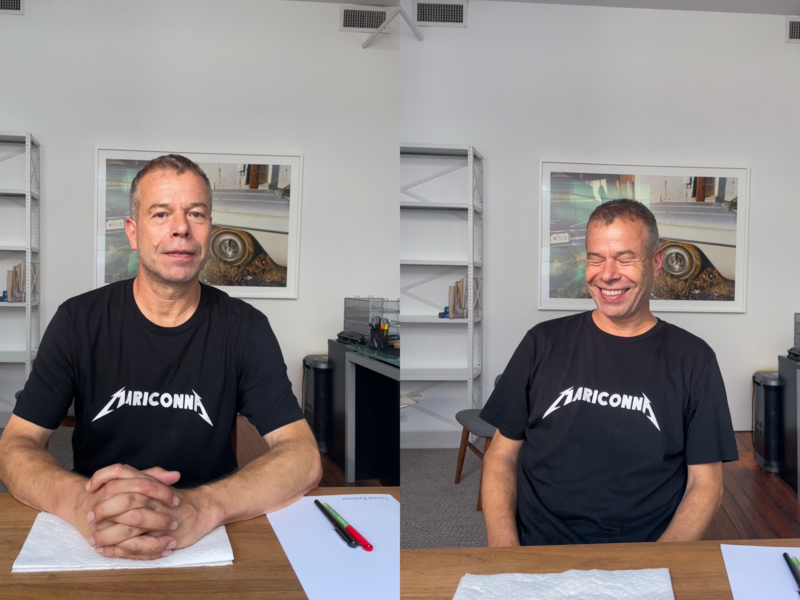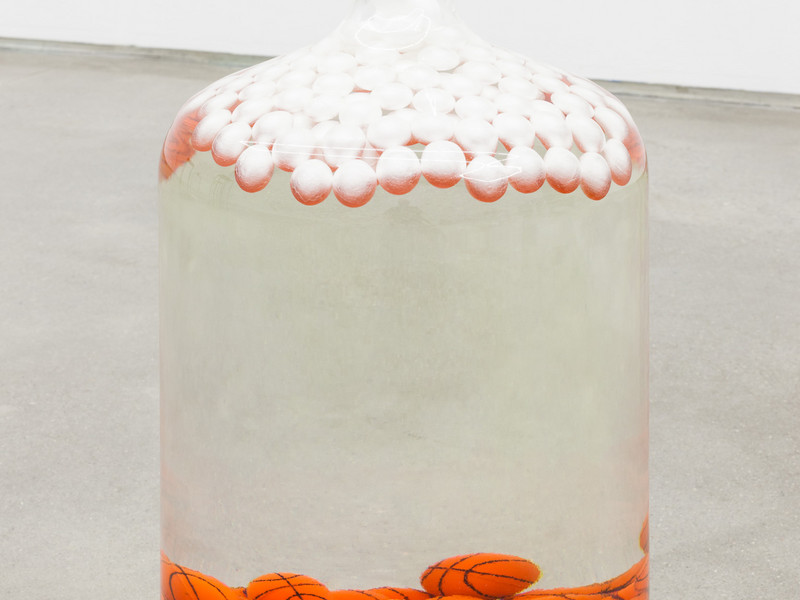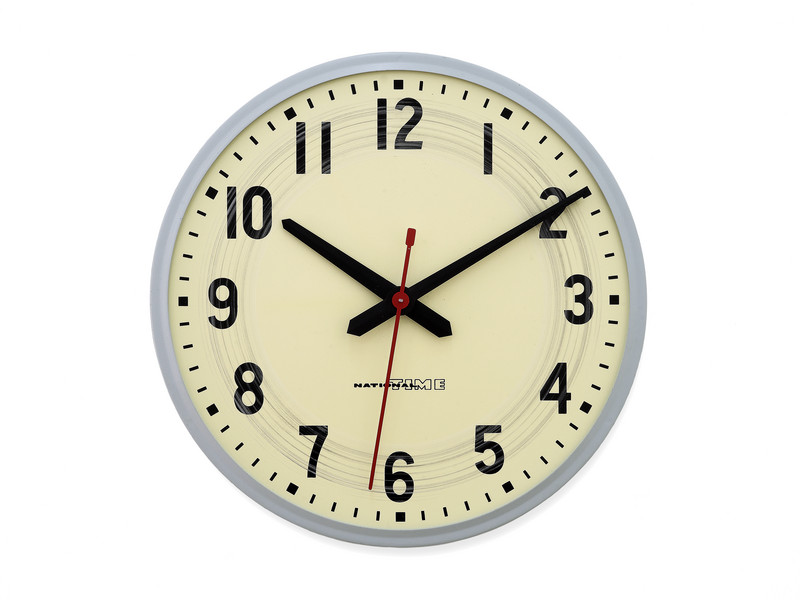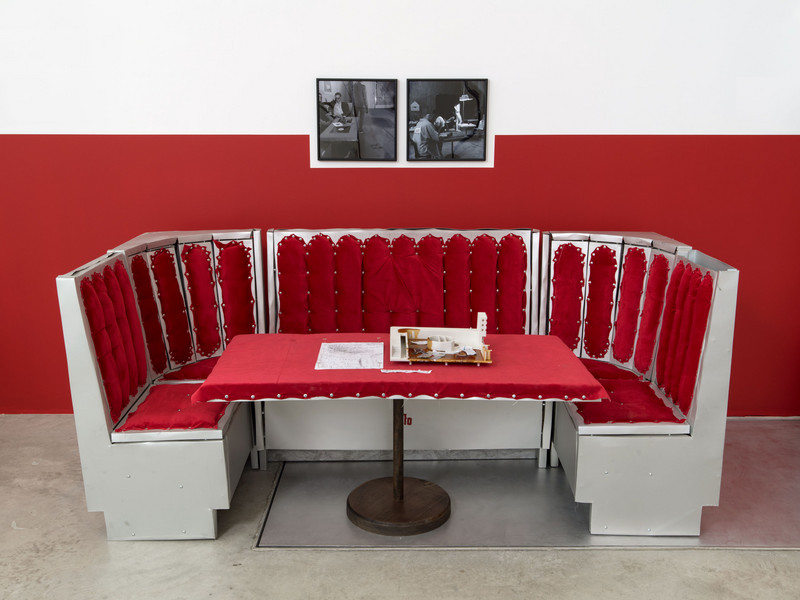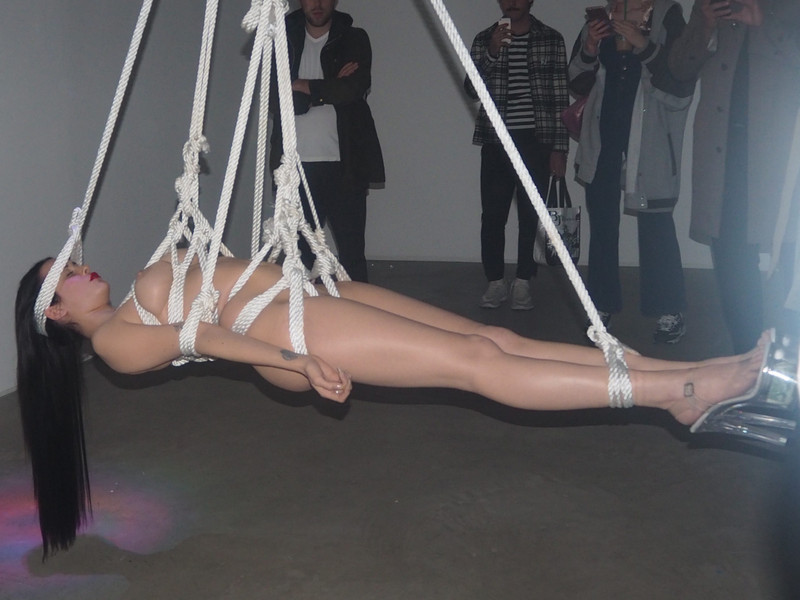Stay informed on our latest news!
Sign up for our newsletter
Rare Prints, Raw Pulse
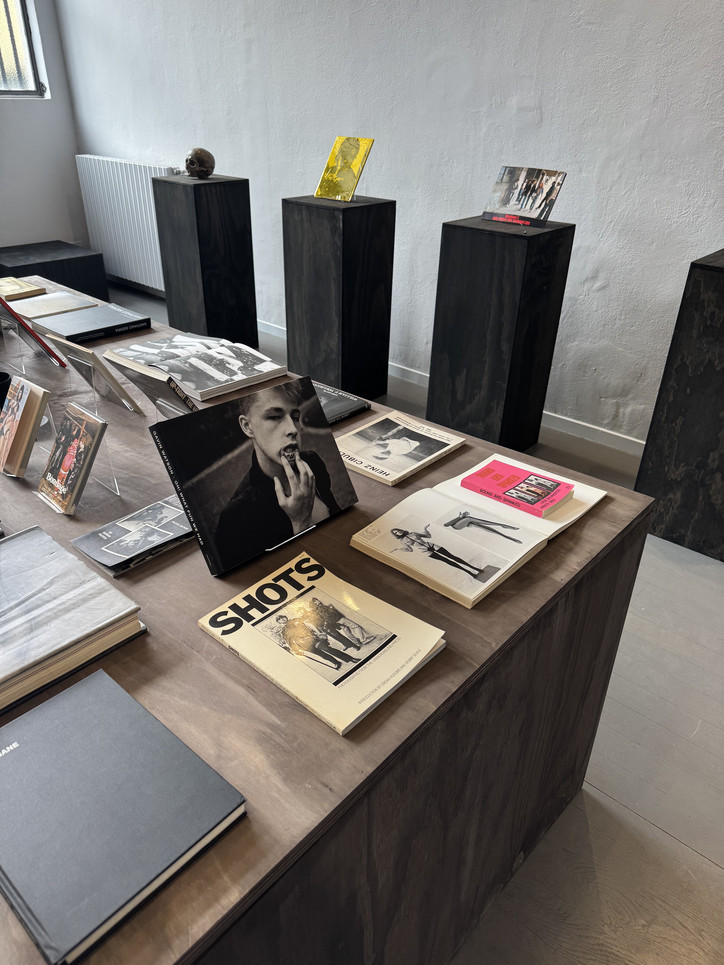
It’s like flipping through Tulsa by Larry Clark with the perfect song playing in the background
Why did you choose the name Veins Books?
The name Veins Books felt like a natural choice. I wanted something simple, almost intuitive. I spend hours in bookstores, often with my arms resting, and the veins in my arms become visible. It resonates with that image of veins and books linked physically. There’s also a nod to The Velvet Underground. In their song Heroin, Lou Reed sings, When I put a spike into my vein, and that line stuck with me. It aligns with themes I’m exploring in my research. There wasn’t a long, romantic process to it—it just felt like the right fit.
How did you start collecting and selling books?
I developed this fascination with books back in high school, around age 17. I went to an art high school in Padua, Italy and they had an amazing library with some pretty unconventional titles, you could say. They had first editions, like Arte Povera by Germano Celant, "Multiples" by Joseph Beuys, The Fourth Sex, by Raf Simons. Gorgeous editions. That library was my entry point to theseartists and to informal art, Arte Povera, American Minimalism and so on. Later, I came across American land artists like Richard Long and Walter De Maria. My interest started mainly with visual art and then widened into other fields, eventually leading me to create Veins Books. But it all started with a deep connection to the art of the 1950s-70s.
So your passion for publishing really took off during that time.
It was all about research back then. I always had this drive to look at, photograph, and photocopy these books—and, of course, to own them. Later, when I had more financial means, I began collecting them, partly to prepare for what I hoped would become my career. But mostly, it was for research, since I was also creating my own visual art, primarily two-dimensional work, like compositions with tar, fire, and pencil drawings on paper. I sought inspiration in both words and images. So yes, research and image regeneration were pivotal for me: the collection grew, and eventually, I felt the need to show the path of this research. It’s like this idea in the book "Arte Espansa" by Mario Perniola,where you look at what it means to be an artist today: where all arts blend and yet nothing is singular. It’s a bit like the distinction between inside and outside artists— artists who want to display their work, live off it, pay bills, and sell. It’s this concrete, driven vision that led me to open two open libraries in my small apartment in Milan, opening my doors and curating the space. Initially, because of budget constraints, it was all very DIY, much like Hans- Ulrich Obrist, who curated exhibitions in his New York kitchen.
How and where do you collect books from?
I find them from all over—online shops, eBay, Instagram. Sometimes I’ll see a post about a particular artist or book and go from there. I also try to pick up new books while traveling. I’ve found great ones in Paris, at Boo-Hooray in New York, Motto Books in Berlin, and at the Milan book market every month. It’s really a mix of online and in-person discoveries. There’s no strict formula; it’s an ongoing, instinctual search.
How many books are in your collection right now?
Between 350 and 400.
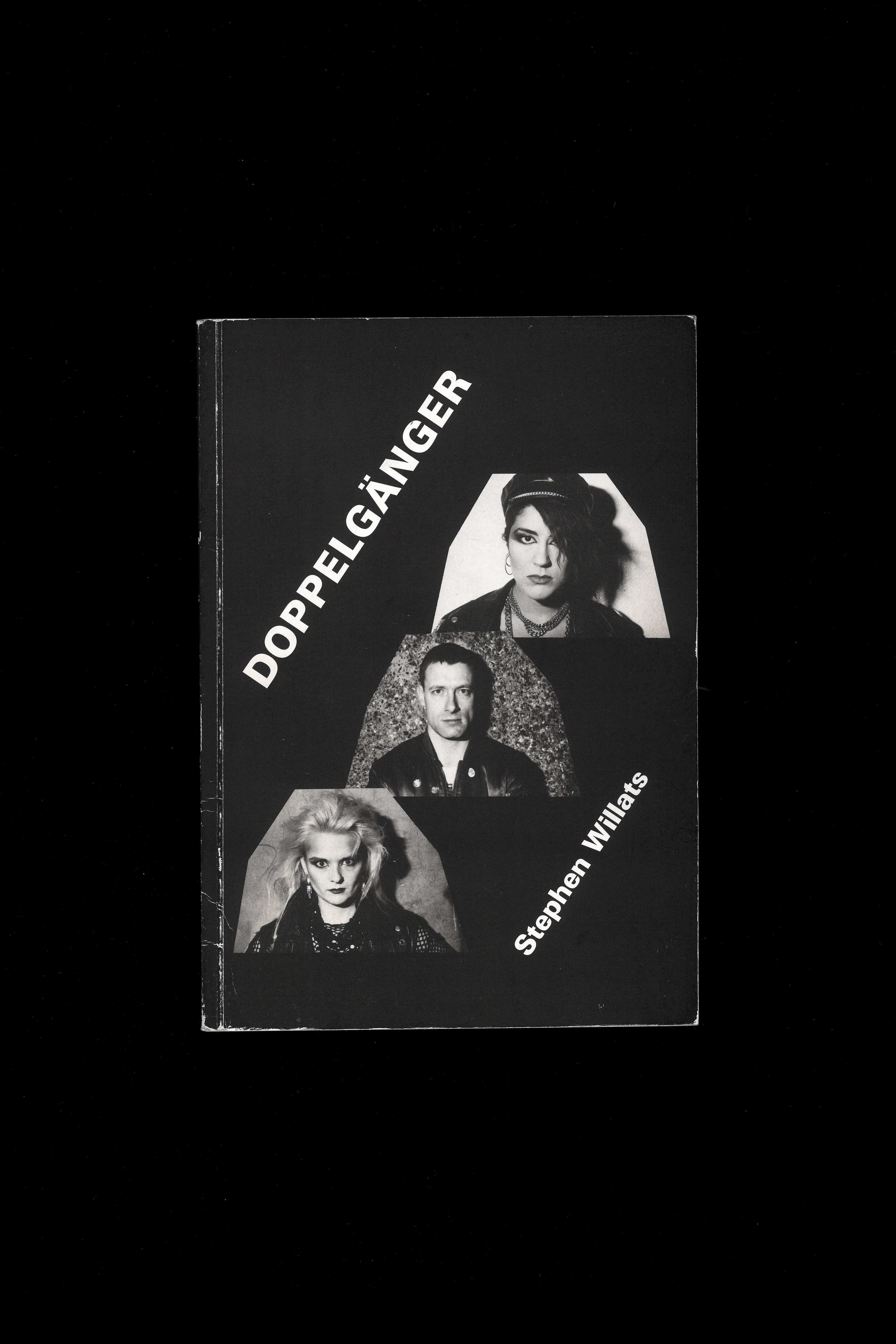
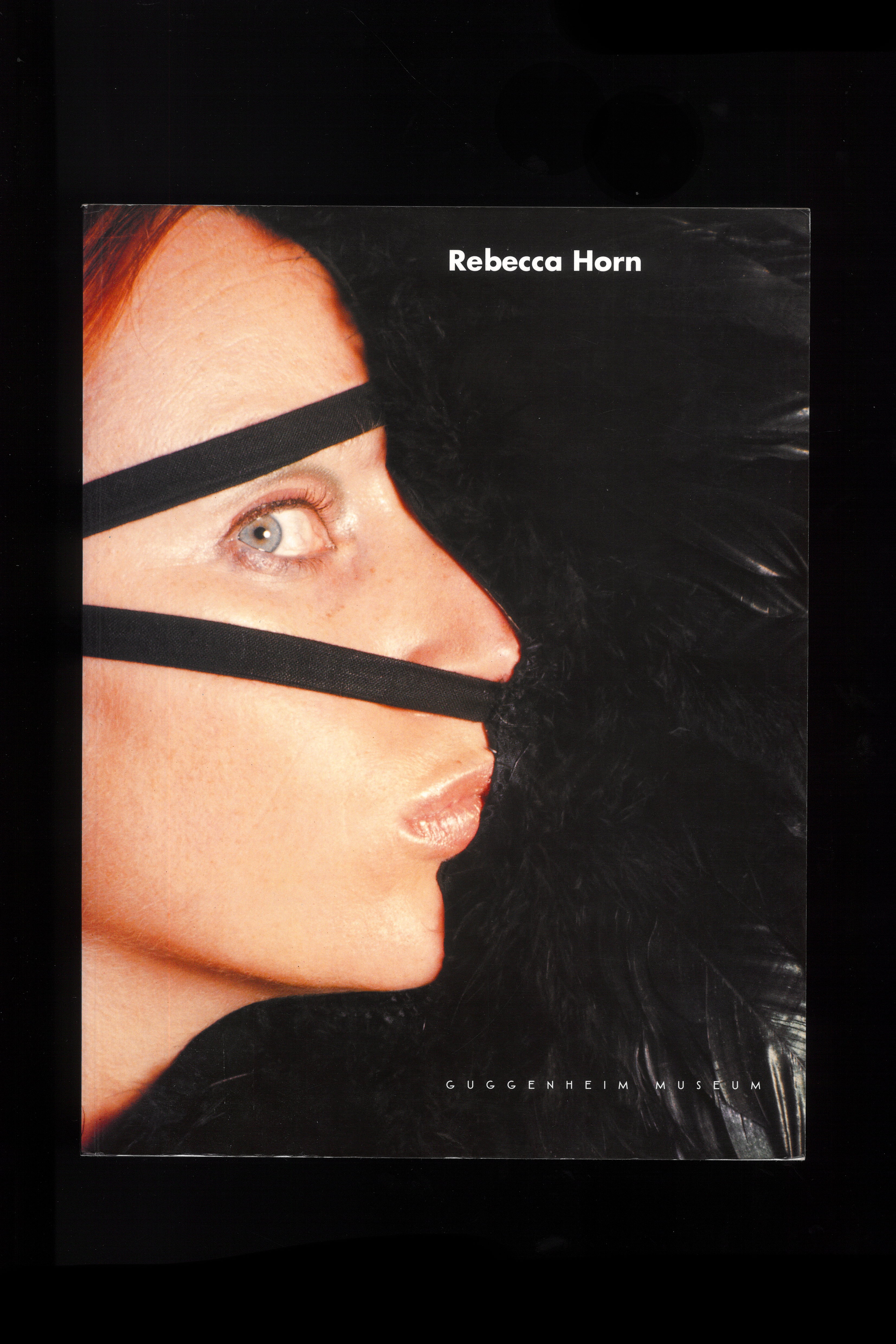
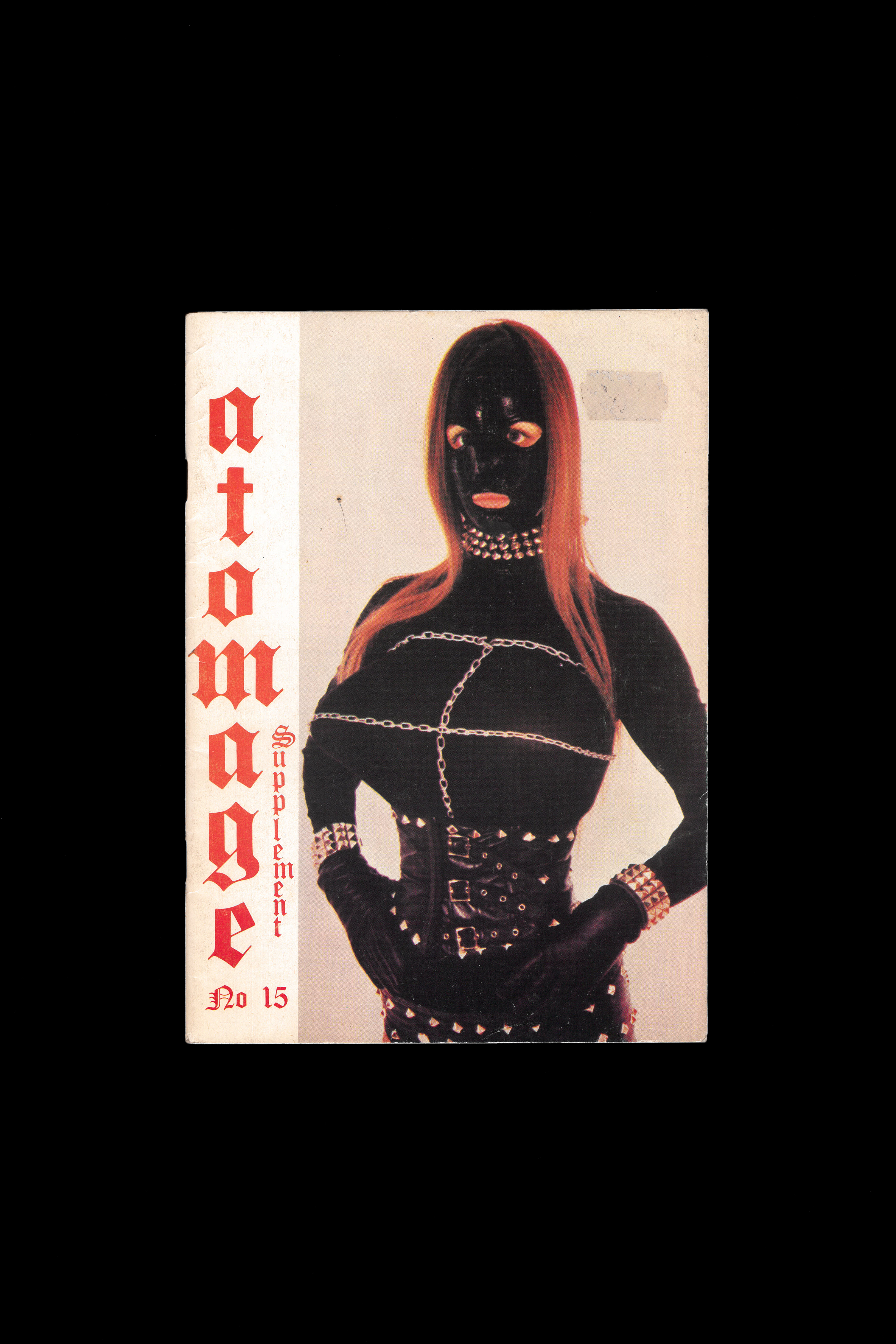
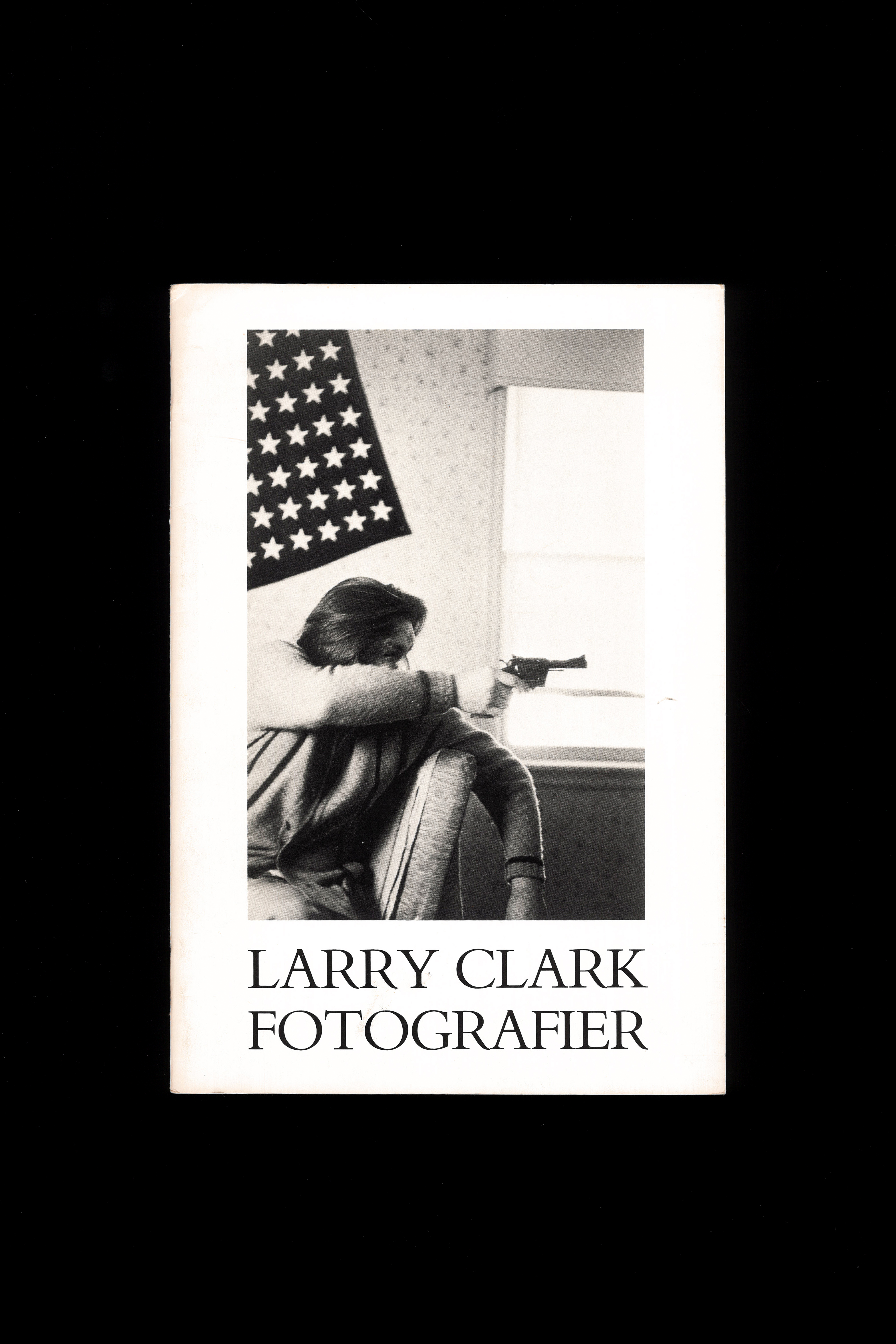
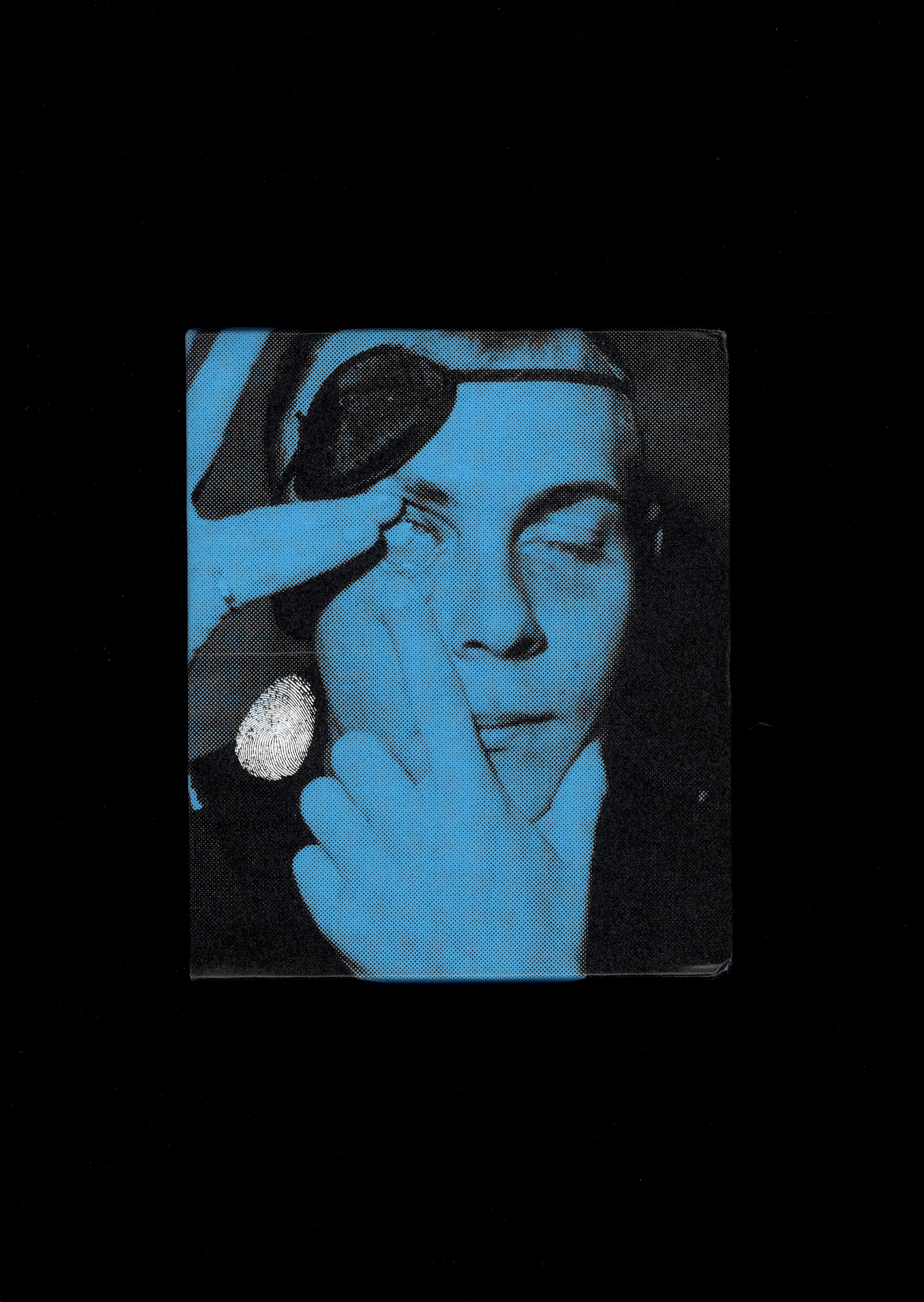
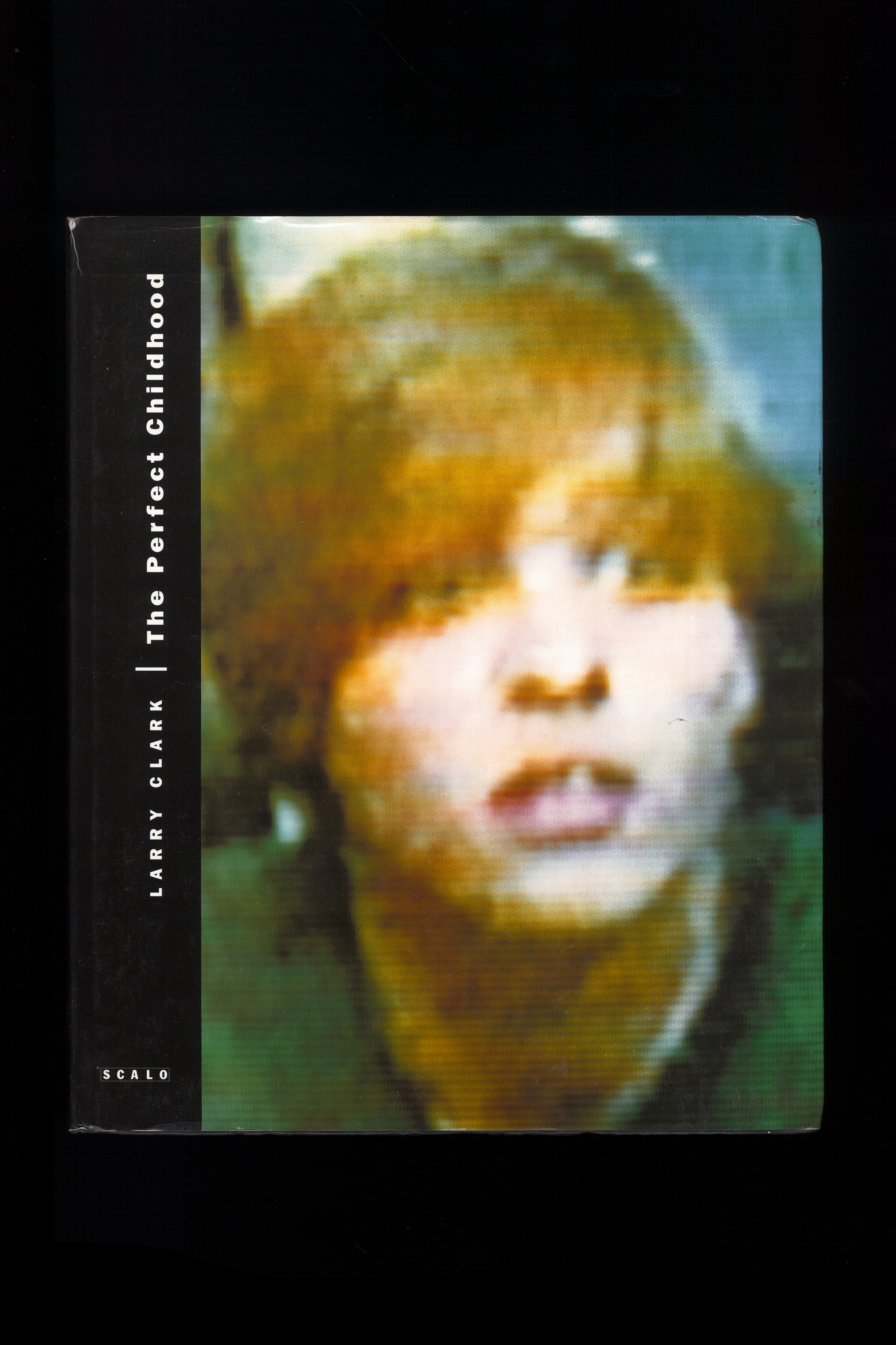
Do you have any criteria for collecting?
There’s not really a strict criterion. I just go with what feels right and what fits with the collection at Veins Books. I have a particular aesthetic, and there are certain artists I gravitate towards, but I don’t limit myself with hard rules. If I come across a book and it feels like it belongs in the collection, I go for it. It’s an organic process that lets me stay open to new finds and ideas. I’d love to know if there is a book in your collection that holds special significance. It changes often, but Arte Povera by Germano Celant will always be special to Veins, for how it influenced the whole project. I’m also obsessed with certain artists, like Robert Mapplethorpe, Richard Kern, and Larry Clark. Their ability to provoke, to ask questions that challenge the ethics of art—it fascinates me. Celant, with his visionary ability to capture an entire movement with a single term—Arte Povera—probably created the last true art movement, recognizing that those artists could connect in a unified way. That book will always be fundamental. Then there’s Mapplethorpe Early Works, an edition with the “Altars” and other framed compositions, which is one of my favorites. There are others too, like Berlin by Hedi Slimane, with iconic photos from my teenage years, like the one of the boy on the ground with the Mercedes-logo leather jacket, which brings back strong memories. It’s always hard to pick—every book holds a unique meaning.
Any books you can recall having trouble giving up?
There were a few books I took off the price list at the last pop-up in Milan. For instance, in the
office, we call Ann Demeulemeester’s book “the Bible”—it has all the photos from the shows before
Sébastien Meunier took over. That was the first one I took off the shelf because I just couldn’t part
with it. I imagine it’s one of those books that, years from now, I’ll look back on and think, this is the
book I showed during my interview about three and a half years ago. That one was tough to let go
of, for sure. Mapplethorpe: Early Works is another I sold but immediately regretted and had to buy
back. Some books feel like a part of you, and it’s hard to imagine not having them around.
How did you decide to open a pop-up in Milan?
The decision was partly practical—Milan simply made sense. But on another level, it filled a gap. Milan has a few niche bookstores, but nothing quite like what I’m building with Veins. I see Veins as closer to the curated spaces you’d find in New York or Paris. The positive response to the pop-up confirmed that there’s a community here that values this kind of experience. It feels like we’re helping to build a local scene and a space where people can connect over unique works. A few years back, there wasn’t much of a following for this kind of scene in Milan, so I’d often go to Paris to find that vibe, those artists, that outlook. There’s always been a pull toward Paris, Berlin, and London within Europe. But now we’ve realized that this scene does exist in Milan; it’s just that no one had represented it in a cool, grounded way. When we did the first Nausea Twins live event, it was clear that the same people you’d see at La Perle, Le Connétable or PCC in Paris, or at 80mmBar in Berlin, are right here in Milan, too. Milan isn’t just what it’s been in recent years—there’s room for an artist scene that hasn’t been fully recognized yet. I wouldn’t call it a “movement” exactly; it’s more like a space that’s now open, and it’s very real. There are artists, photographers, musicians, brands—all with a desire to establish a vision. And as more people discover it, that vision only gets stronger. Honestly, community is almost everything to us. It’s exciting, even though, at the end of the day, we’re not doing anything revolutionary.
What are your thoughts on the accessibility of artistic knowledge?
Art and fashion often feel elitist. Exclusivity has a certain allure. It works in a lot of cases, and it’s part of the proximity experience. Think of Chrome Hearts, where you can only enter by appointment, two people at a time, with a gate and a bodyguard. That mystique around an artist as this one-of-a-kind figure is compelling because it builds that dream of being that person. But at the same time, if it weren’t accessible, I wouldn’t have been able to form myself. So a bit of exclusivity is good when balanced thoughtfully.
What about Instagram? And what’s next?
Instagram is essential. I love seeing the variety of profiles and how each one personalizes its own space. In my case, it started as an archive of the volumes I owned, and from there, everything started: the pop-up, the e-commerce we’re about to launch. The big goal is to find a permanent space in Milan. I’m also considering doing more pop-ups
abroad. There was almost a chance to go to Los Angeles, but it didn’t quite work out. I’m not rushing; I want to build Veins Books slowly and sustainably. The first pop-up was great, so I’m planning the next one in January during Fashion Week. We’ll see where it goes from there.
I can’t end this interview without complimenting you on the playlist from the Milan pop-up.
Thanks for noticing! Music is an integral part of Veins Books. As I mentioned earlier, there’s a definite influence from the New York scene—the Velvet Underground, CBGB, The Cramps, Richard Hell, Patti Smith, Dead Boys, Television—and, of course, European influences like Public Image Ltd., Siouxie and the Banshees, The Fall and The Clash. These artists all seem to speak the same language as the books in the collection; it’s like flipping through Tulsa by Larry Clark with the perfect song playing in the background. Everything in Veins is about creating that immersive experience, with music adding depth and atmosphere that connect people to the art on a visceral level.
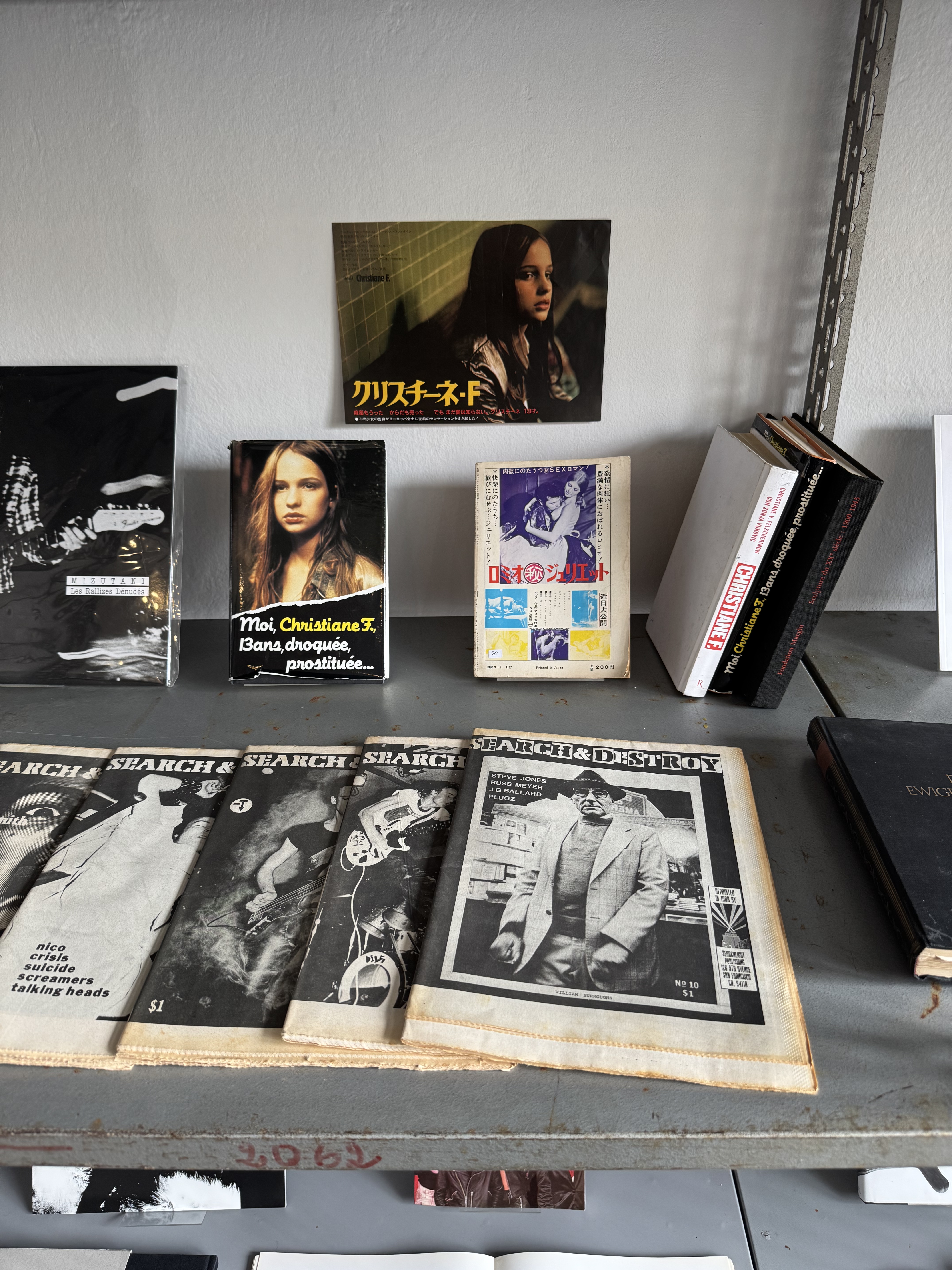

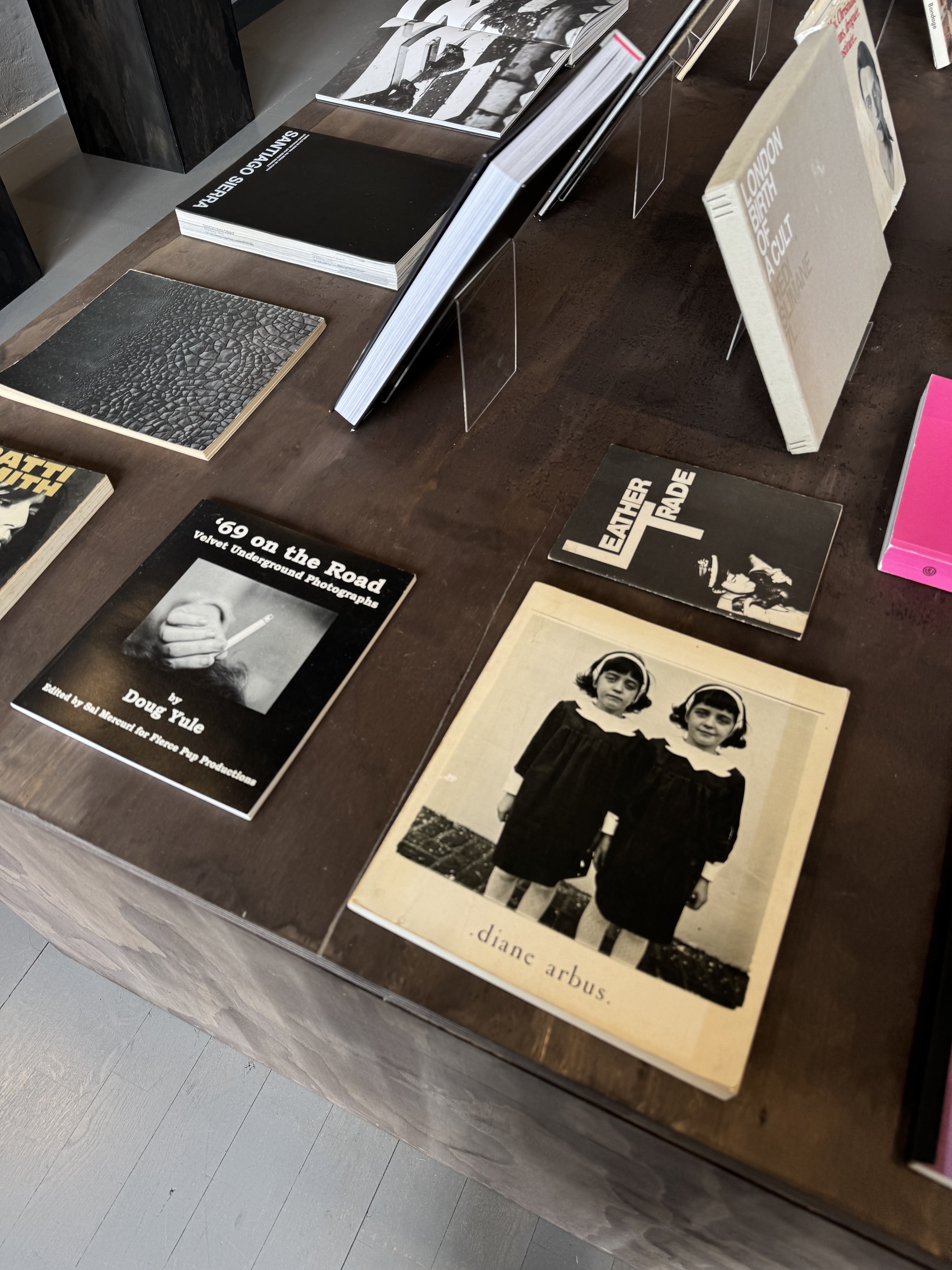
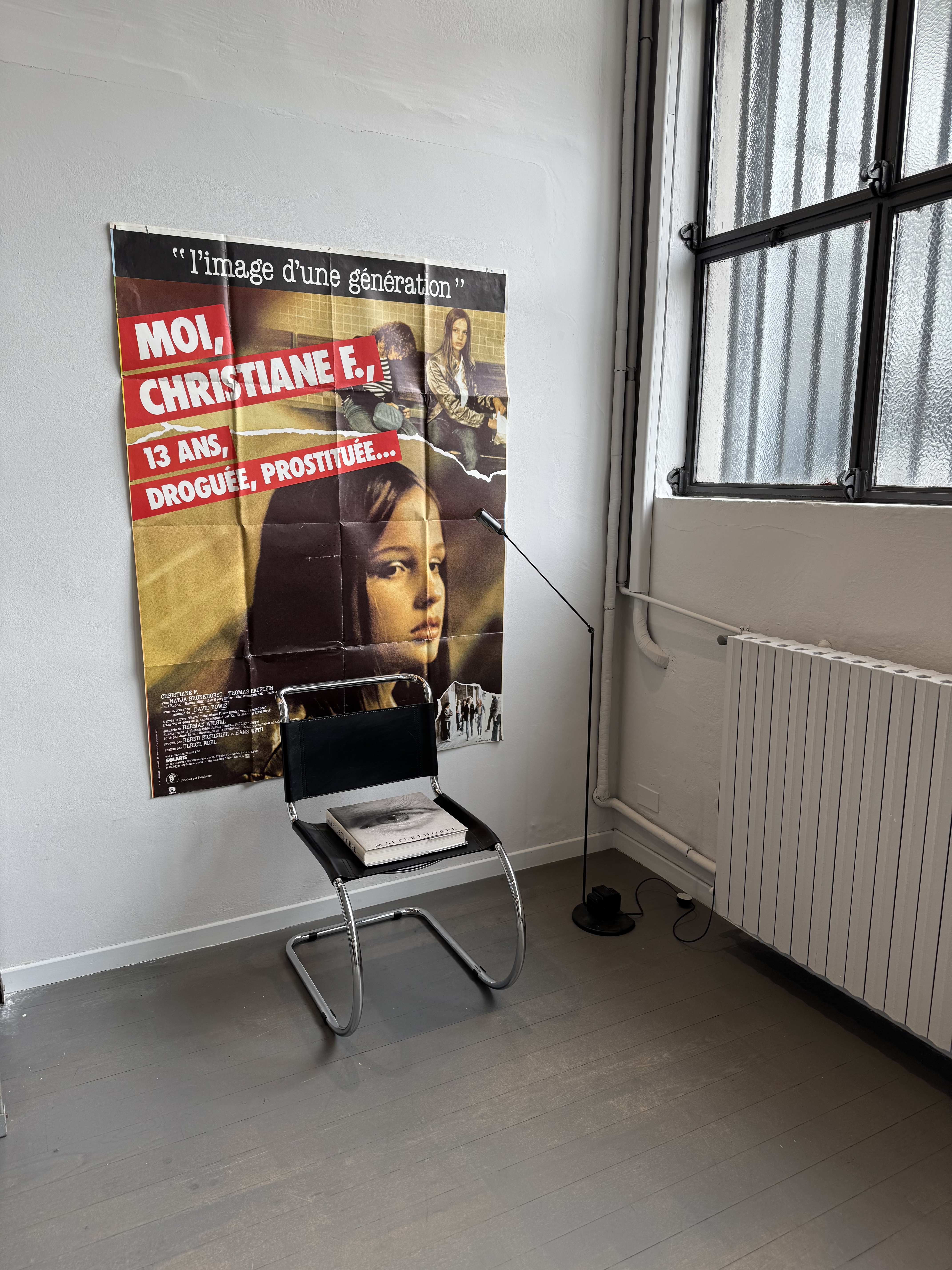

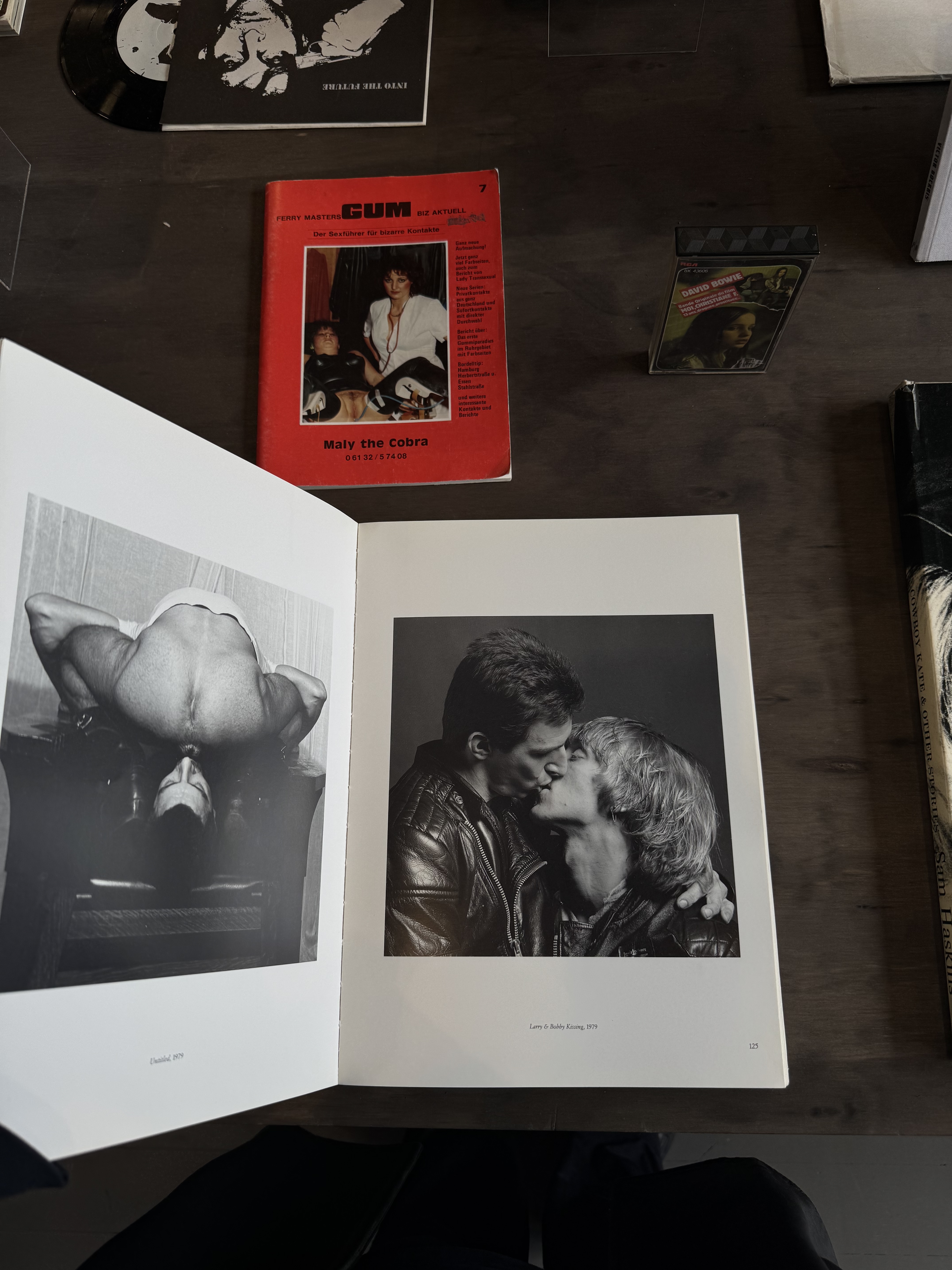
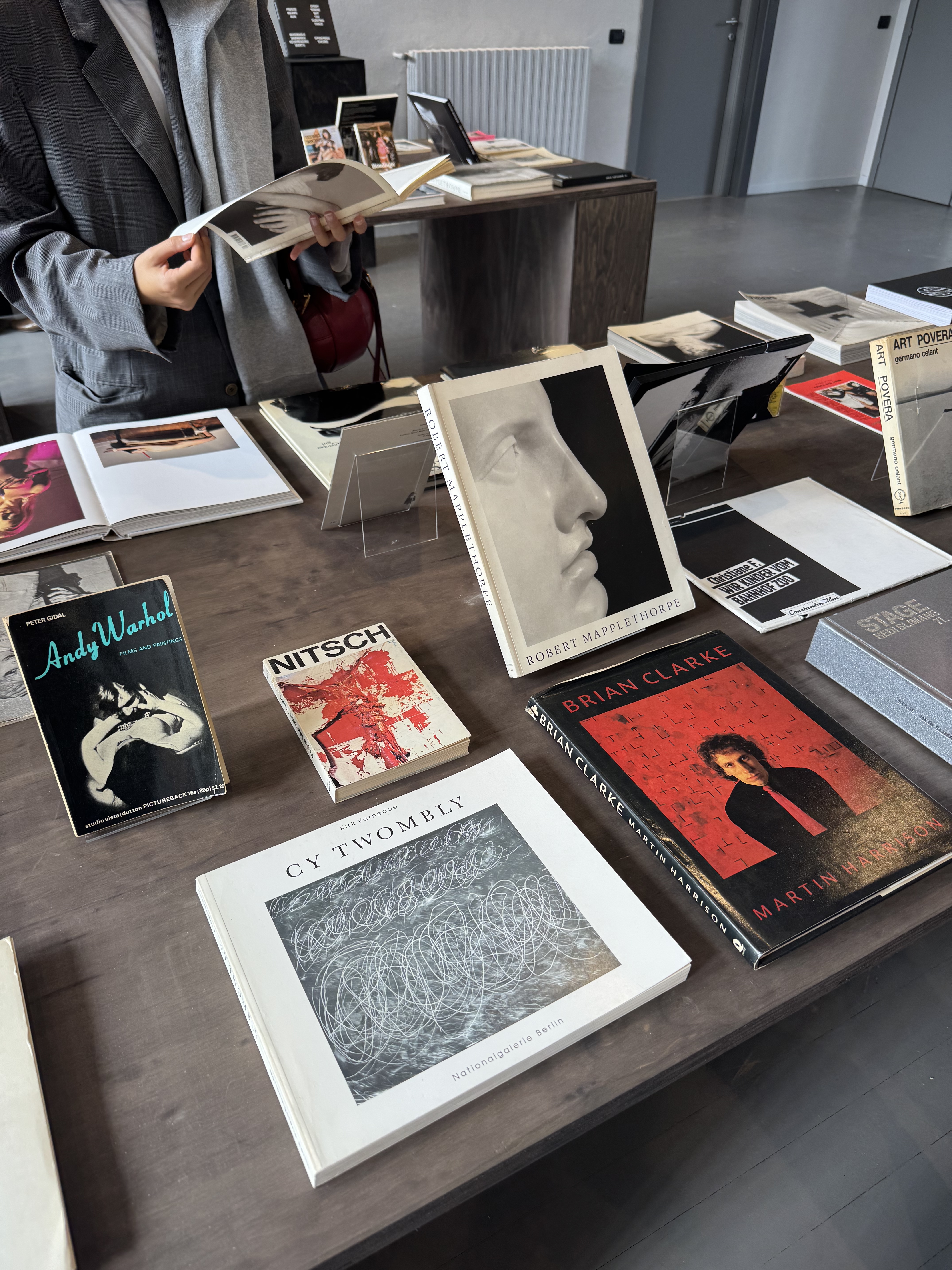
Recommended articles

Samsara: Death, Rebirth, and Birth
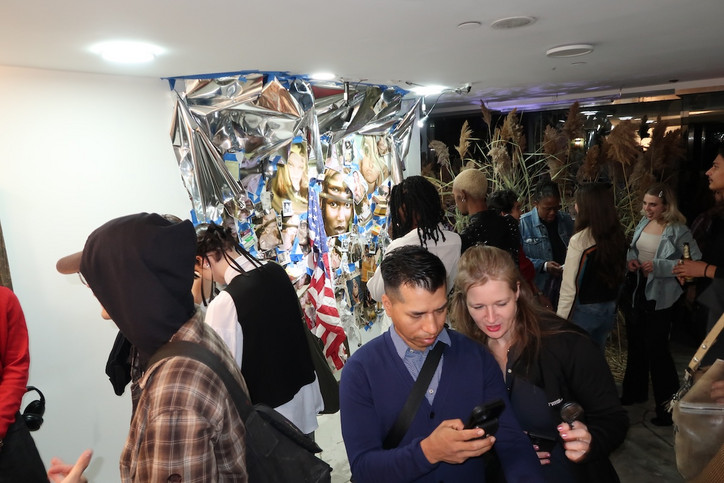
office sat down for a smoke break amidst the crowded sidewalk with Noah Berghammer, the founder of PRIV.Y. Noah discussed his take on combining forces with technology in the art world. He remarked that technology is "so viscerally a part of our everyday society now so I think avoiding using technology to enhance work is stupid or naive. But, real-live work and real-live showing of work is still the most important thing in the world." Samsara is just one of many shows PRIV.Y is expected to host. One of Noah's hopes is that these events will help deepen our appreciation for the work, getting people off of the sidewalk and into the gallery.
Using technology as a tool to chronicle Samsara, Noah hopes to include the online community and bring these experiences to them as well. He added, "I think we are at this interesting point where we know about the internet community and we know about the real life community and there’s this beautiful gap to bridge. So, how do you take IRL experiences and give it to the masses on social or by using tech? A lot of what we’ve tried to do with our events is use them to create culture where we are and then document it properly to give culture to people like…me when I was living in Wisconsin six years ago before knowing what New York was, you know."

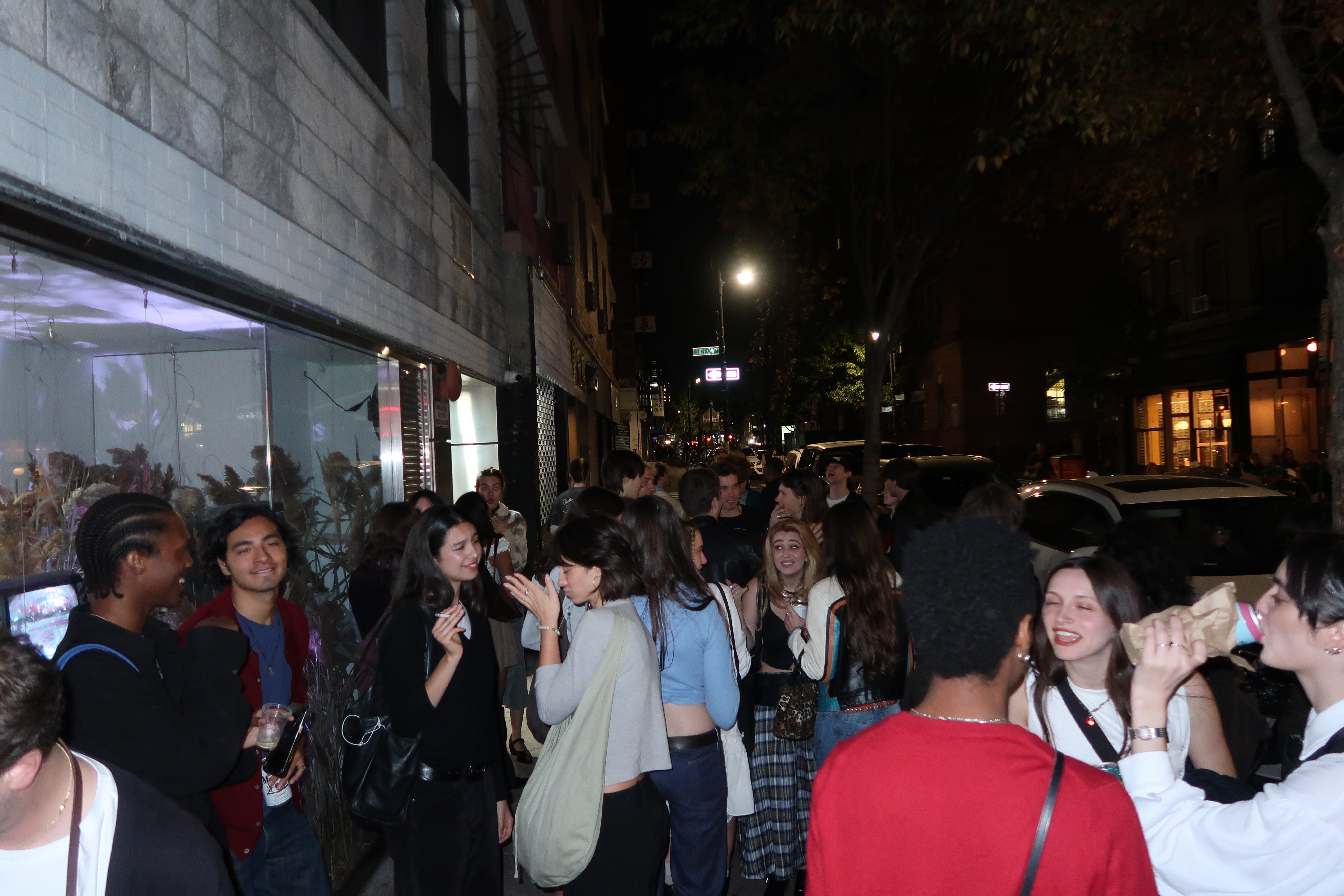
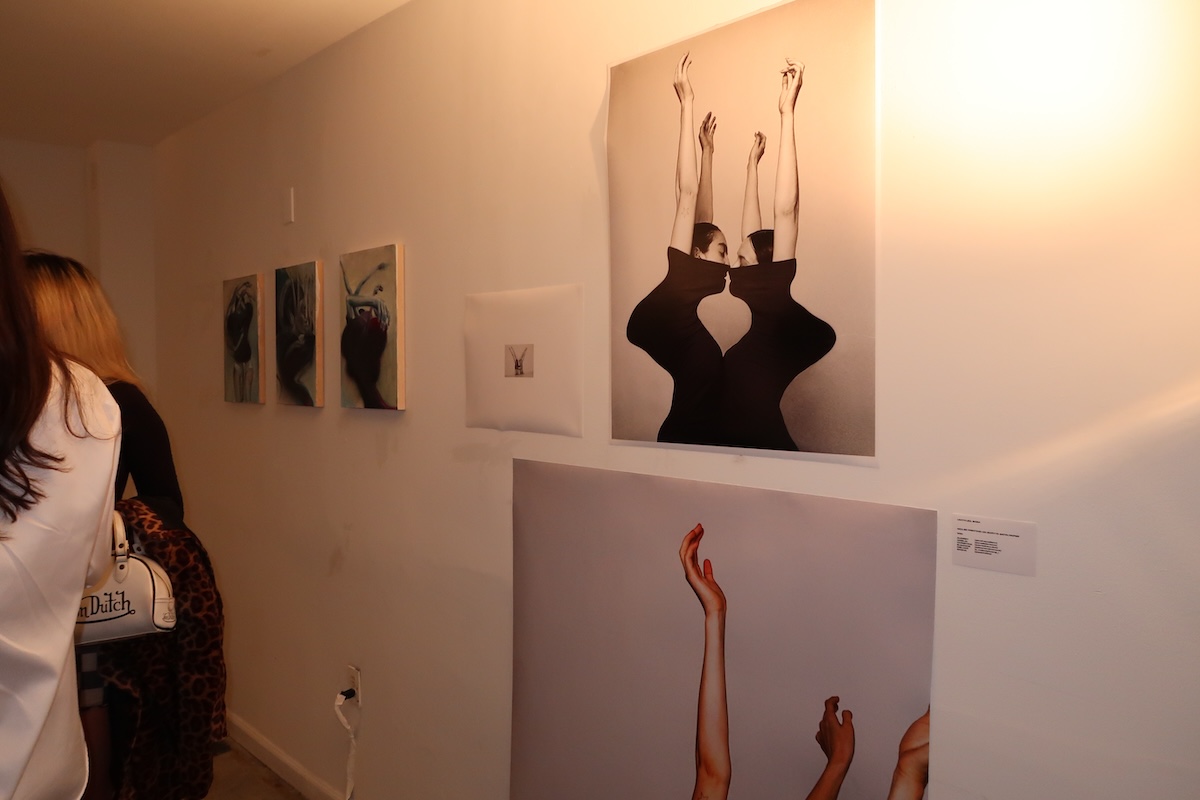

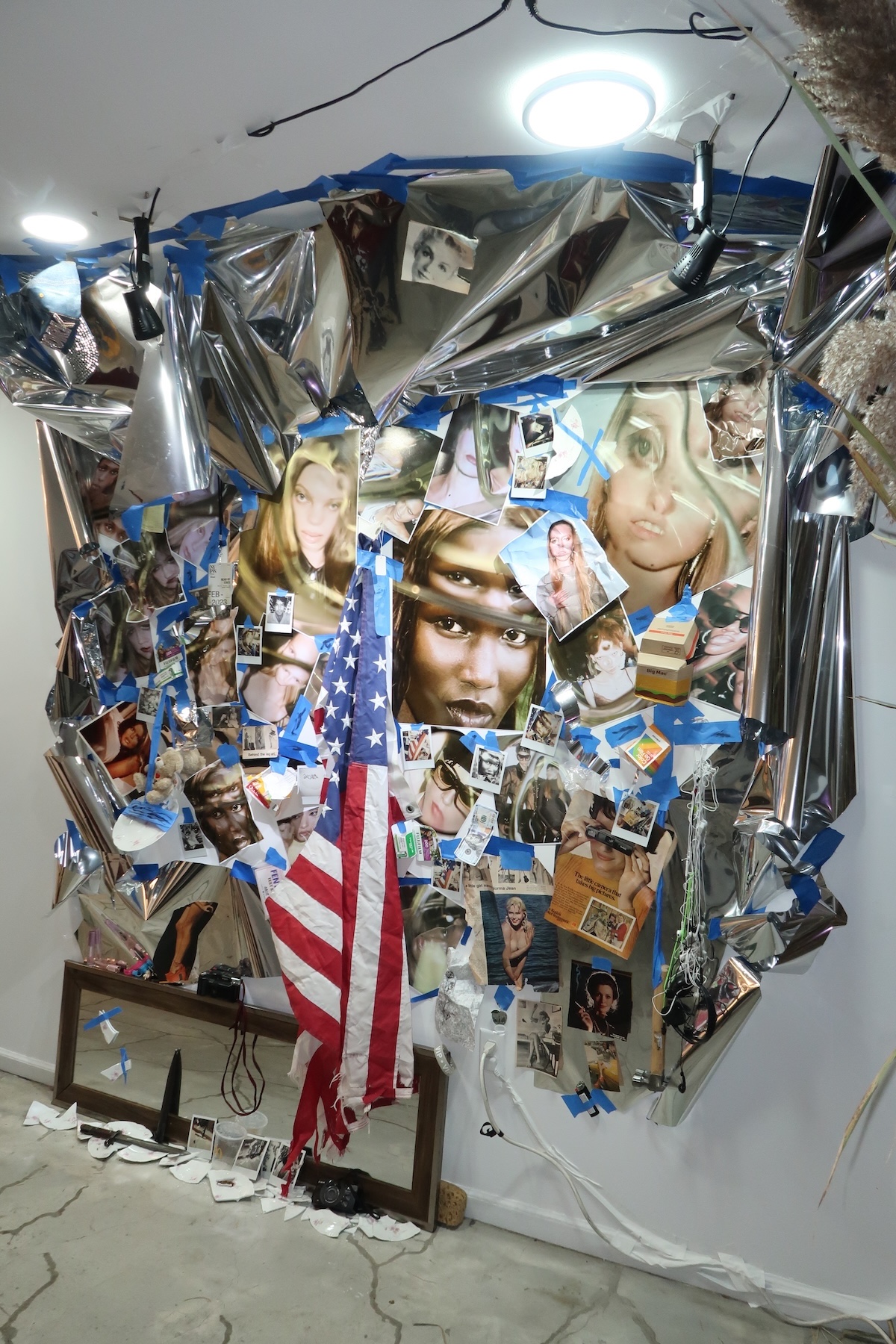
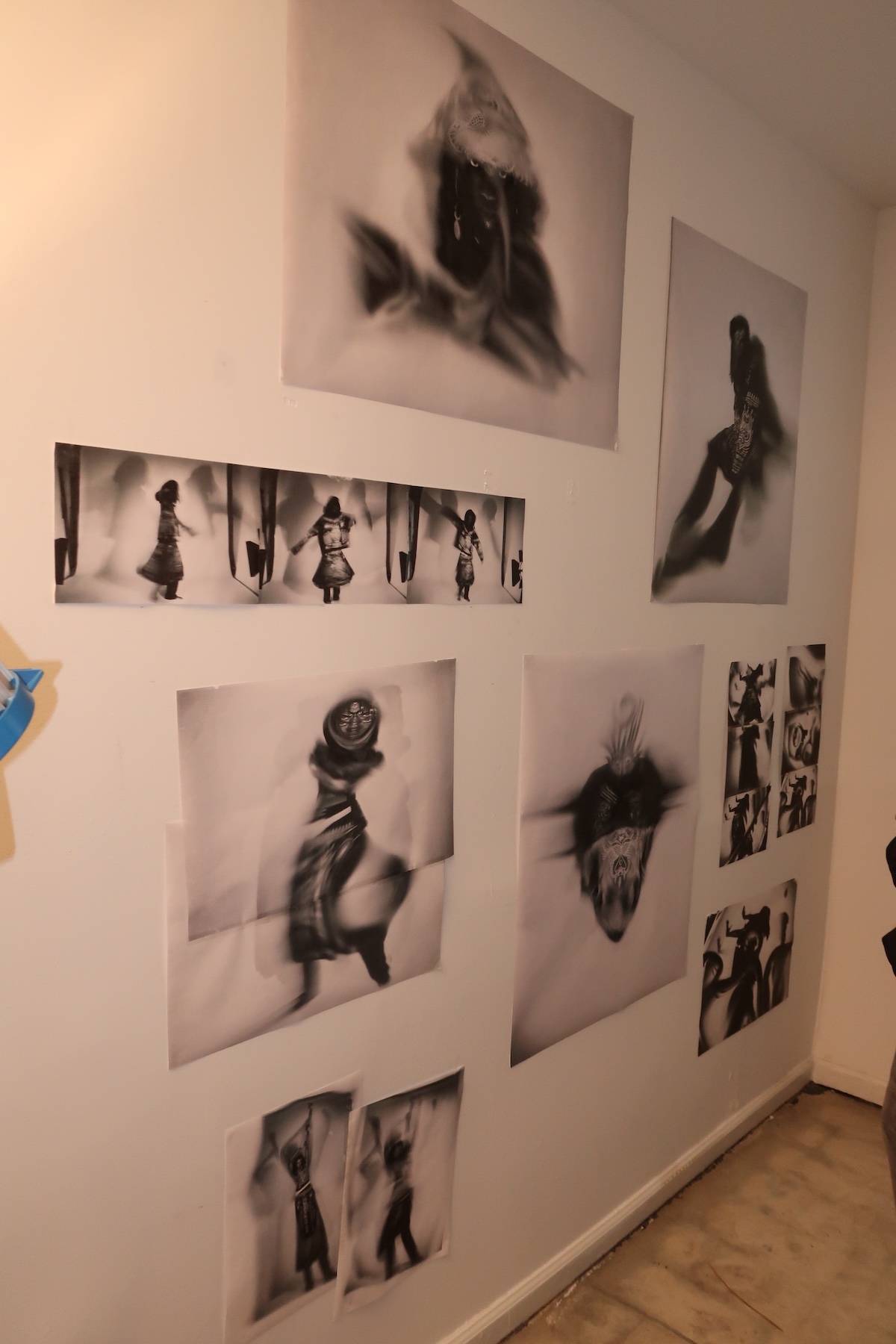
Alongside all of the pieces was an element of the artistic process. This addition is heavily due to the curator's interest and love for understanding the methods used to arrive at the final product the viewer sees. At the show's end, Zal was able to give office some deeper context into the process of Samsara.
When did the idea for this show begin to unfold and why?
ZD: The creation of the lens began a year ago as I experimented with various textures to layer onto my digital photography. While analog grain will always be the most romantic, the environmental impact—from material shipping to plastic containers and the chemicals used in film development—makes film too wasteful for regular use. In my search for new textures, these lenses were created. Though I’m hesitant to call these lenses eco-friendly, they are far less wasteful than film which in turn creates textures that feel more relevant to today’s world." After the long process of creating the lenses, the idea for the show emerged from my desire to share a physical product in a tangible setting and inspire other artists to explore and incorporate the lenses into their own practices. Too often, artists unveil work on social media, only for it to fade after seconds. Like a musician’s album release party, I wanted a live event where people could feel the work’s energy and understand the process. These lenses are like adult toys— from Cameron Gonzolez Williamson’s CRT livestream distorted lens window display to co-designer and engineer Luciano Picone’s desk with lenses for hands-on exploration, we aimed to make this exhibition as interactive as possible.
How did you choose this group of artists for the show? In what ways do you all complement each other?
ZD: I have always been confident in my taste. From the visual artists whose works make up the show to the musicians who closed the event, I knew that if I curated artists I genuinely admired, it would resonate with everyone. So, in selecting artists, I reached out to those who, over my three years in NYC’s art scene, have deeply inspired my personal practice, in both aesthetic and philosophy. My taste being highly eclectic, brings a mix which enhances the show's aim to showcase the fluid versatility of the distortion lenses across artistic mediums. What unites the work is the use of the distortion lenses as well as the already surreal nature of many of the artists’ work. I included artists with both fast and slow creative flows to reveal the distortion lenses' range — from quick inspirations that can be recreated digitally to meticulous frame-by-frame analog work. Ultimately, I curated a show which I am a fan of, celebrating both the artists and the dynamic possibilities of these lenses.
What brought on the interest in the Hindu concept of the cycle of birth, death, and rebirth? How do you see this concept shaping the way we interact with the world?
ZD: David Carson’s quote, “Don’t mistake legibility for communication,” sparked my research into German Expressionism and Hindu philosophy—two central themes woven throughout this show. The parallels to German Expressionism, where artists, diverging from realism, used color and form not merely as aesthetic choices, but as profound responses to the societal turmoil of their time. Similarly, Carson’s design philosophy, which deconstructs traditional norms to give rise to new forms of communication, mirrors the Hindu cycle, Samsara, of birth, death, and rebirth. In both realms, distortion is not chaos—it is the key to unveiling deeper truths and discovering new perspectives. I find it is often forgotten that, while humans have created tools for the practicality of mundane categorization and communication of life, we each move through our own unique planes of reality. In the pursuit of efficiency, nuances and personality are sacrificed. Distortion, I have found, is an extremely effective way to break the illusion of sameness and allows one to express not just what they see, but the deeper emotions of how they feel. By distorting the work to the point of chaos, new channels of communication emerge, allowing for a deeper, more authentic way to express ideas and feelings beyond the limitations of our own minds or something as simple as words. This approach mirrors the Expressionist movement which around 100 years ago, when color was first used creatively to evoke emotion rather than simply depict life as it literally appeared.
How does the distortion lens further your exploration of these themes?
ZD: After sending my Ray Gun magazine scans to painter and typographist Ant Aguirre, we discussed how we could expand on David Carson's idea that, “legibility does not always equal communication”. Ant explored how many times a word must be distorted before it loses recognition and transforms into something new. For his piece, he took the word "turmoil," a complex concept reduced to seven letters for the sake of efficient communication, and distorted it repeatedly until it became an abstract painting, revealing a deeper, purer meaning of turmoil through his lens of Ant’s mind. In my own work, I was deeply inspired by my time living in a monastery deep in the forests of Thailand as I sought to convey abstract moments and visions of the surreal realms of peaceful emptiness often reached through deep meditation. In addition I was influenced by Egon Schiele’s portraiture, where he emphasizes a single detail or two while allowing the rest to slowly fade into the canvas. The liquid distortion lenses have, for the first time, allowed me to express the fluid, dream-like nature in which I perceive reality.
How do you feel about the use of technology in art? Is the lens an example of this?
ZD: From analog to digital, technology in art serves as a powerful tool to expand one's creative vocabulary and explore new forms of self-expression, breaking through the confines of one's own mind. Artificial intelligence, a major focus in contemporary discourse, often faces skepticism from traditional artists, yet I’ve come to see that AI is only as strong as the intention and input behind it. In a similar way, I view these liquid distortion lenses like AI—your input shapes the process, and the outcome remains beautifully unpredictable. As you refine your technique with the lenses, holding them at unique angles to capture intriguing perspectives, your control over the medium grows.
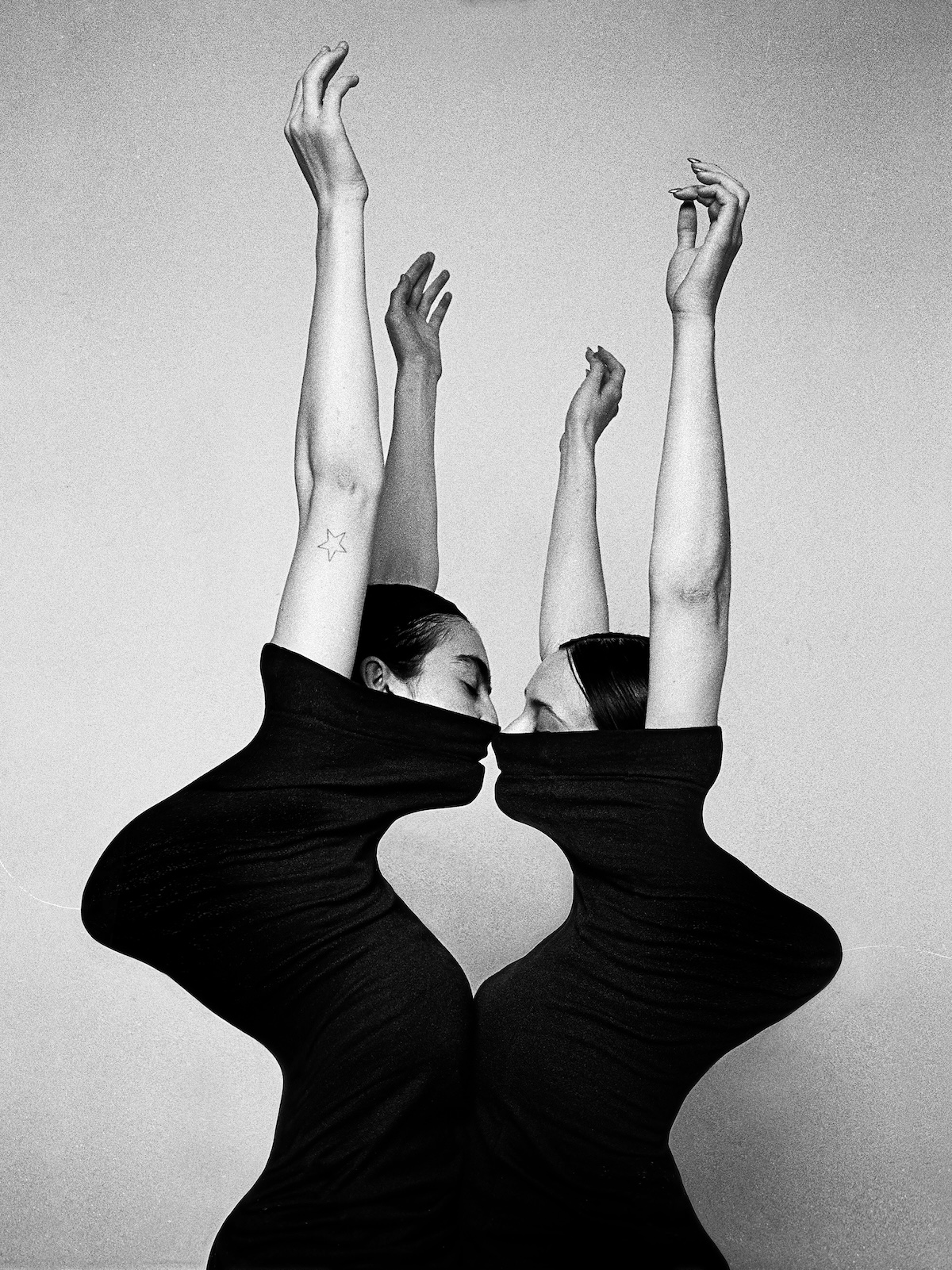
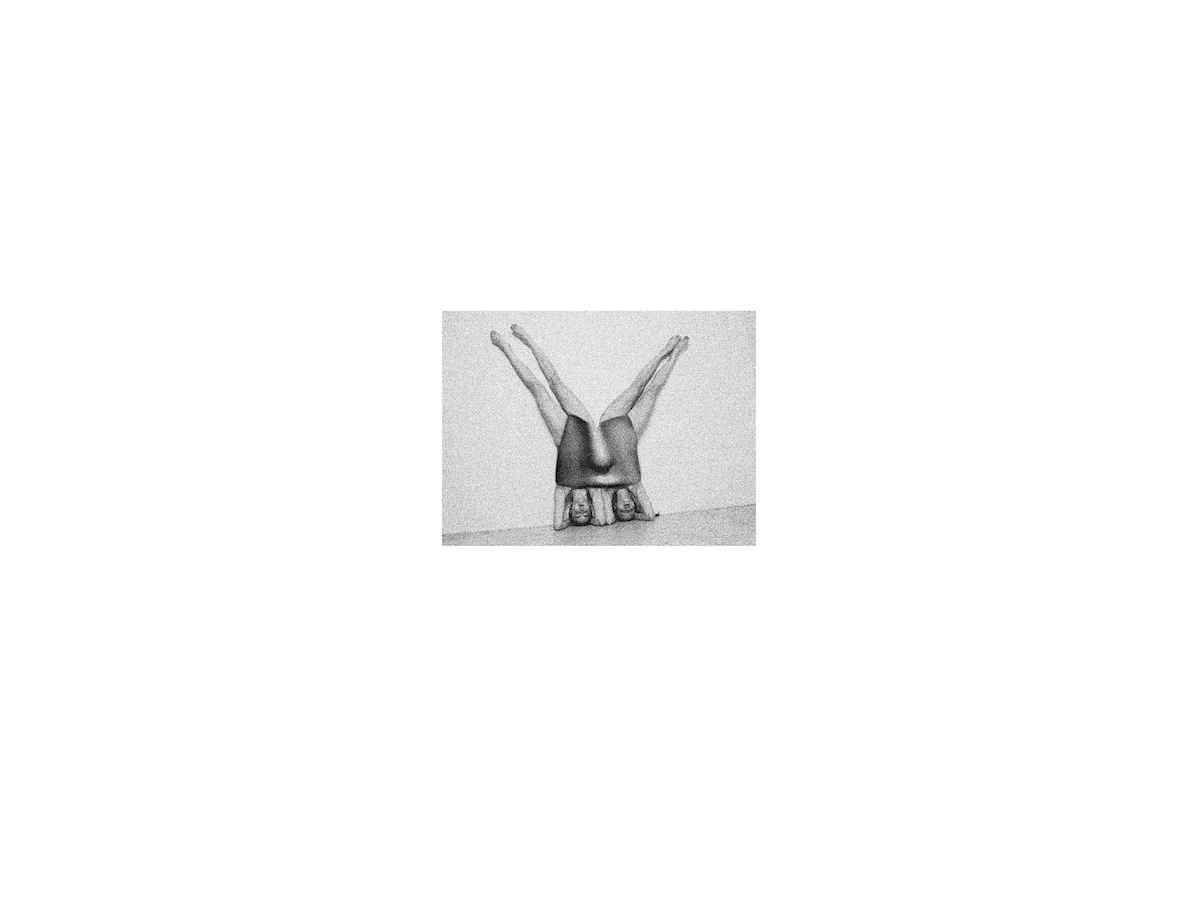
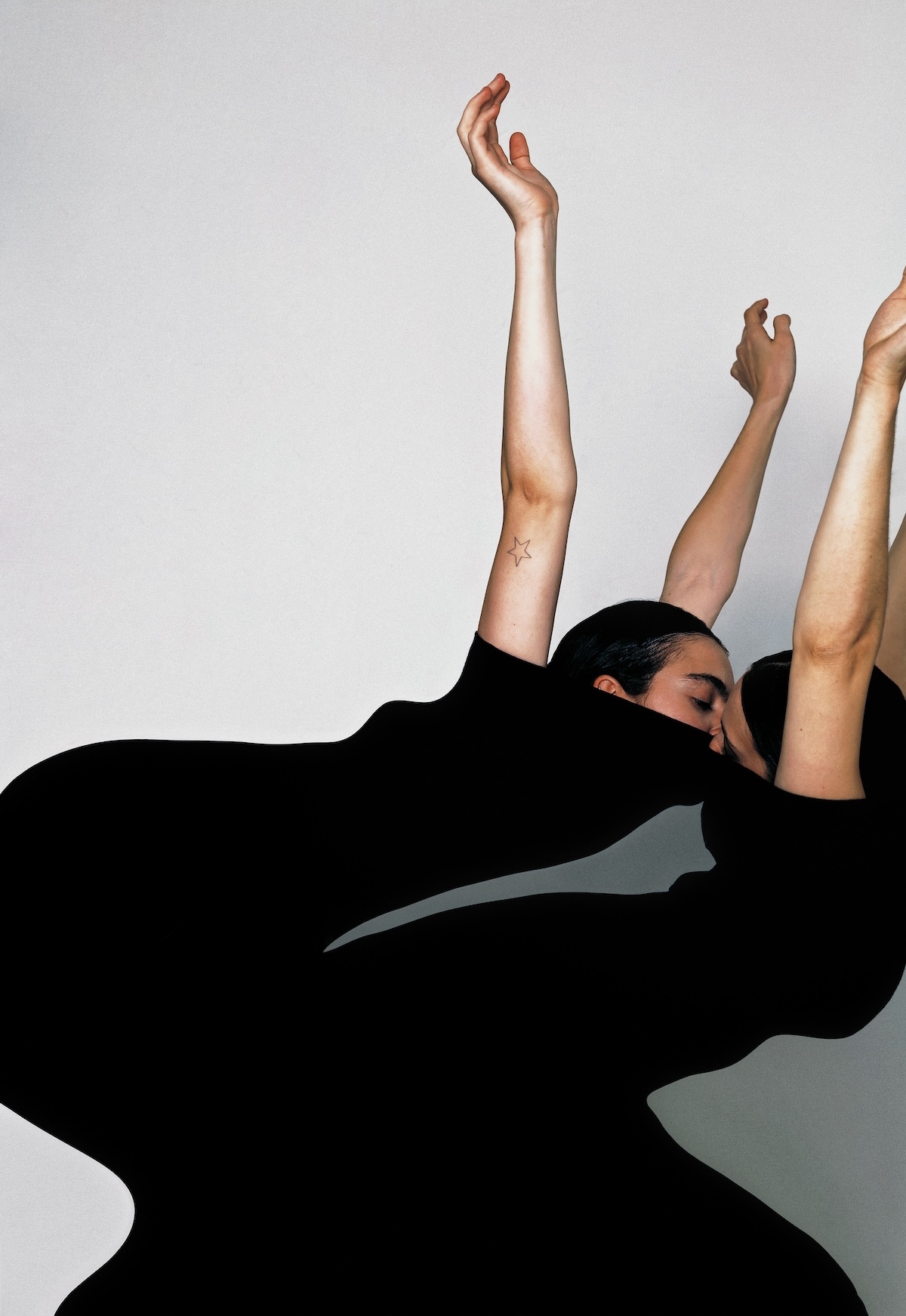
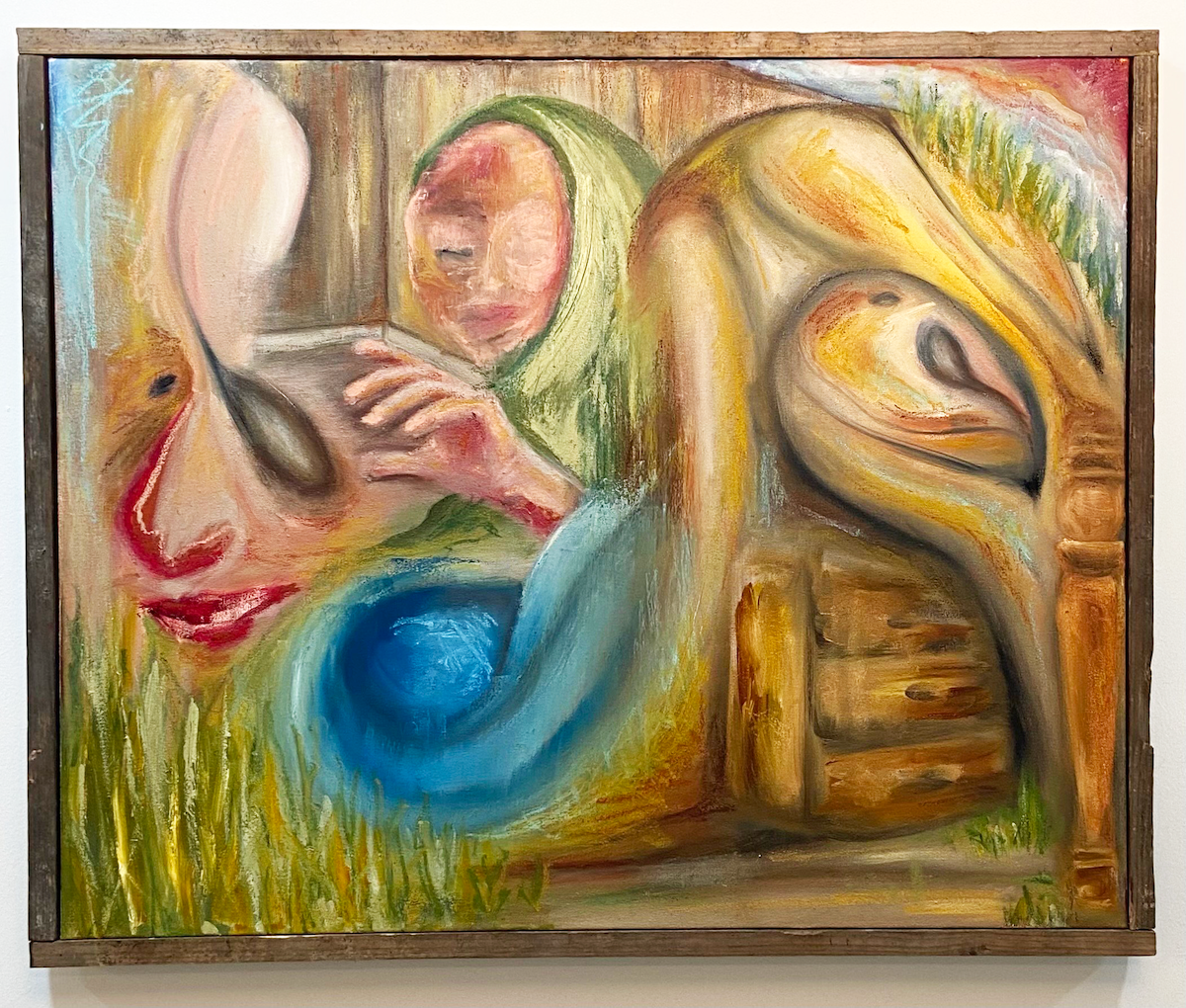
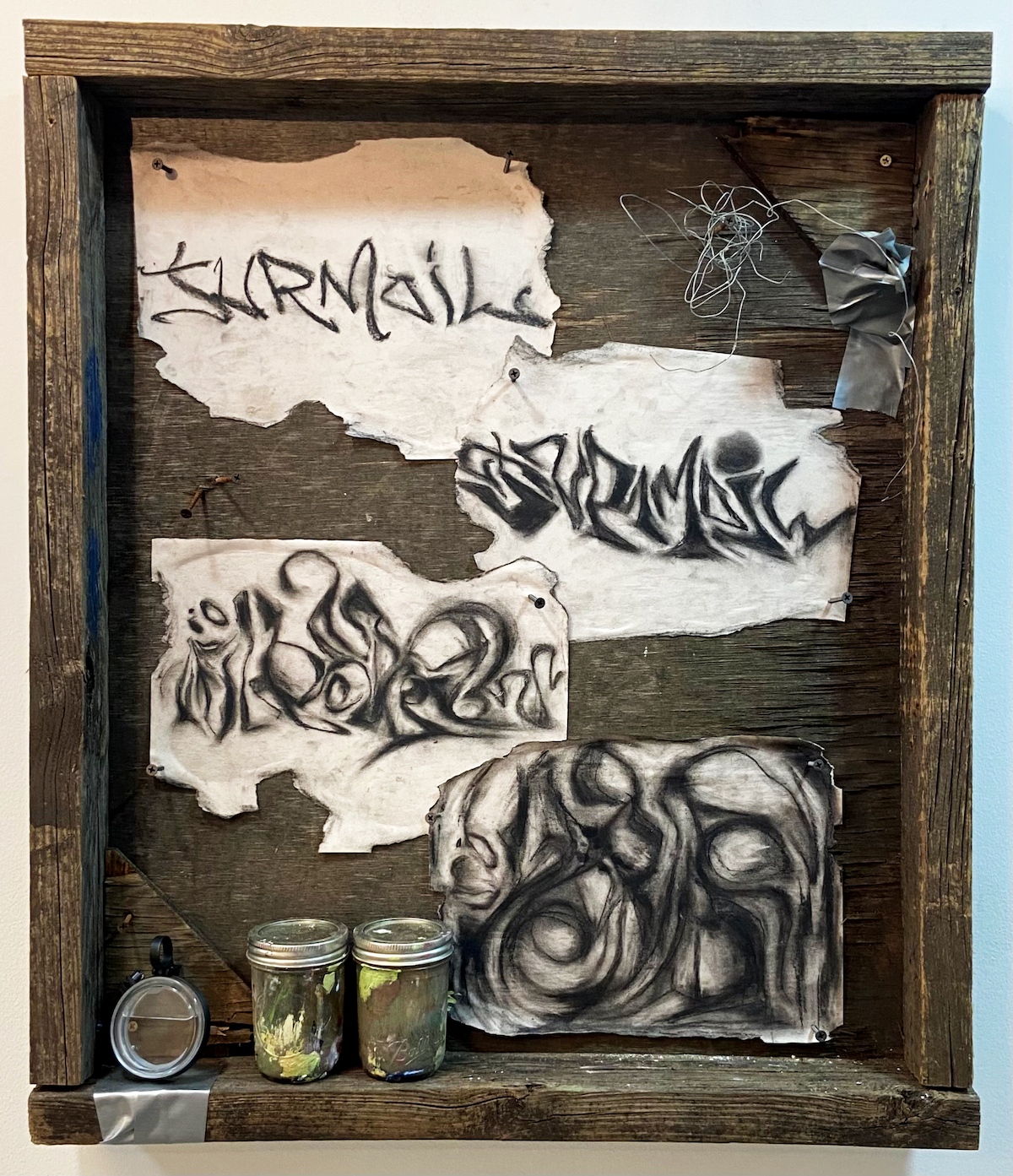
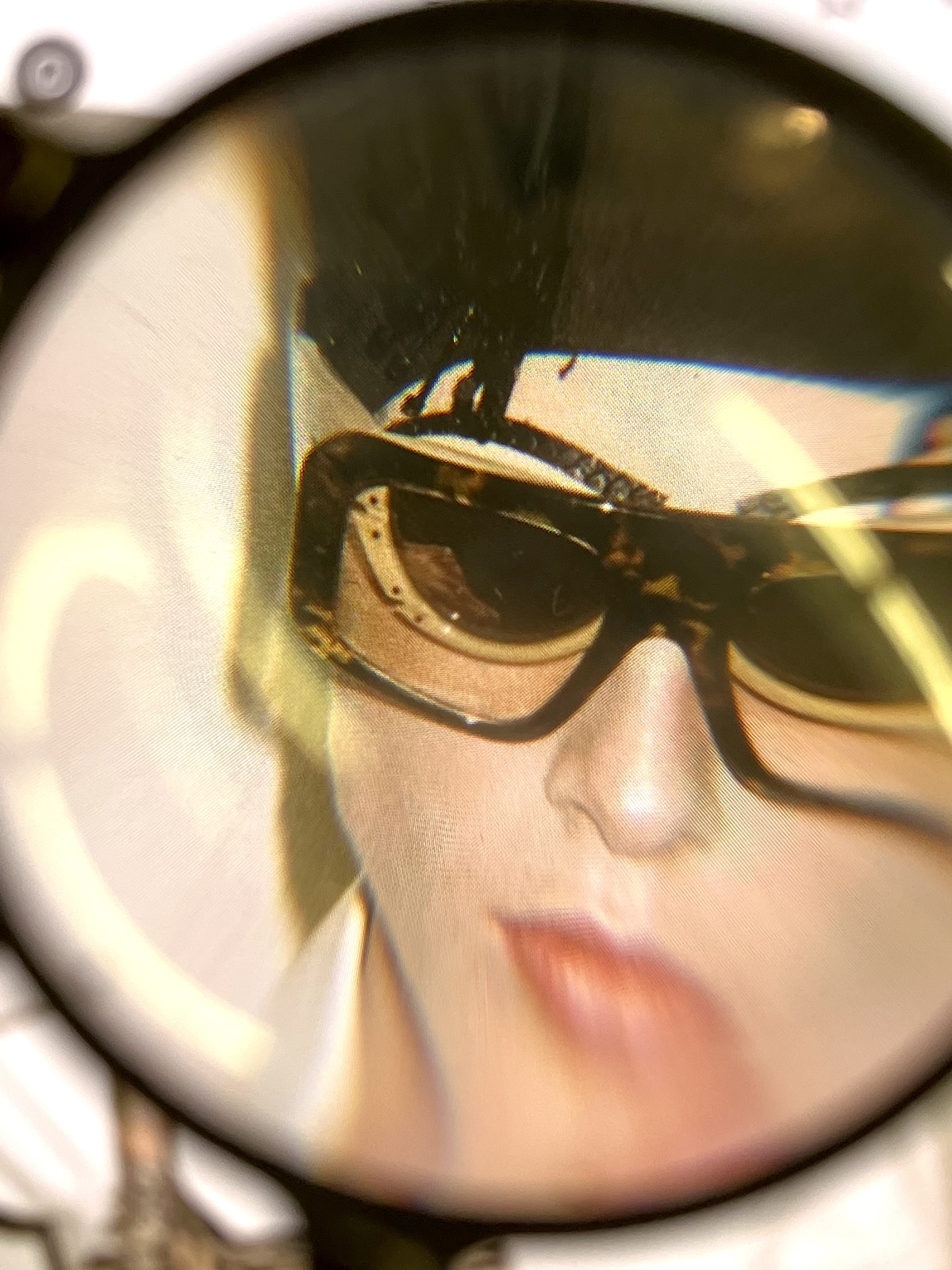
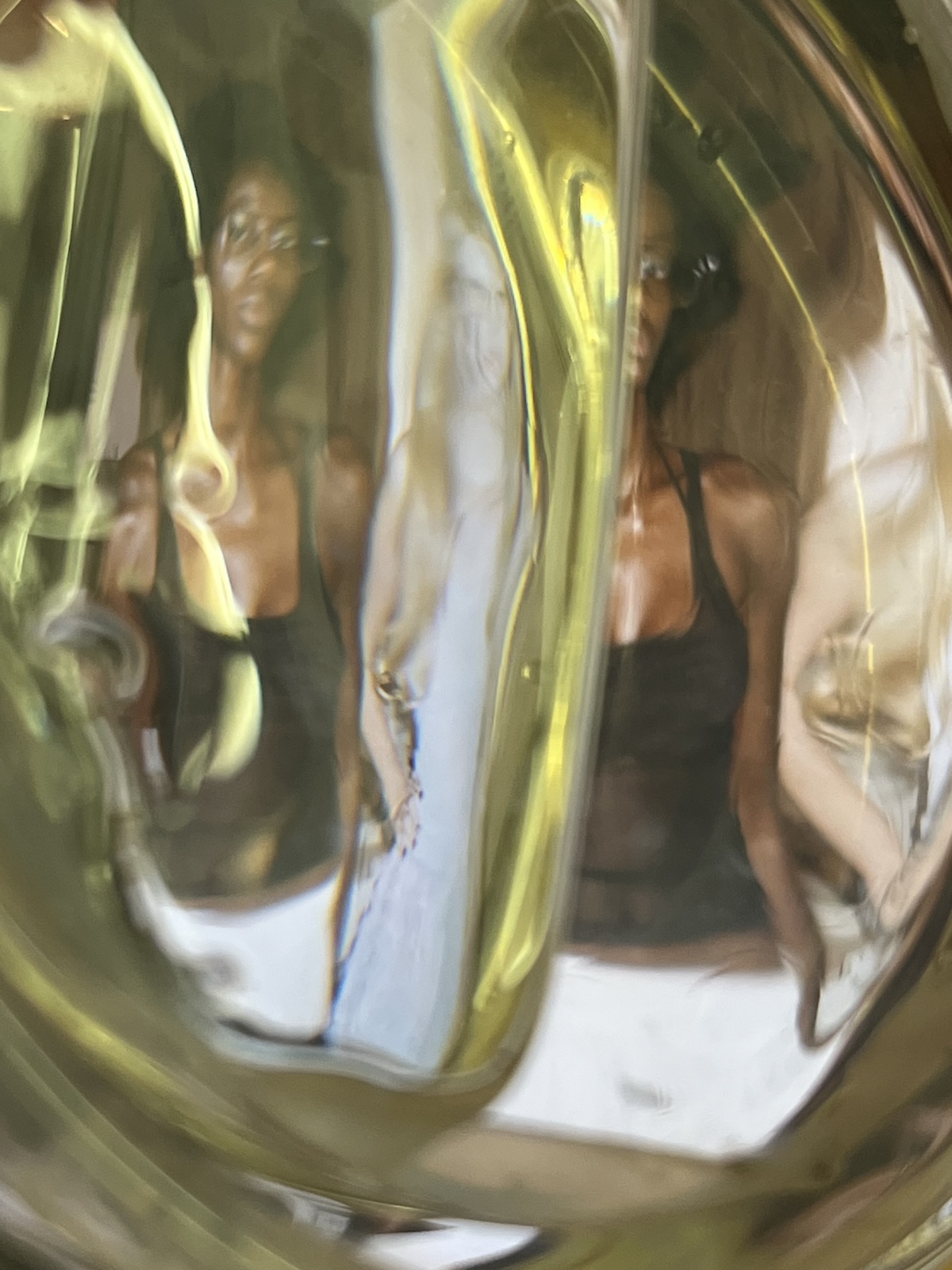

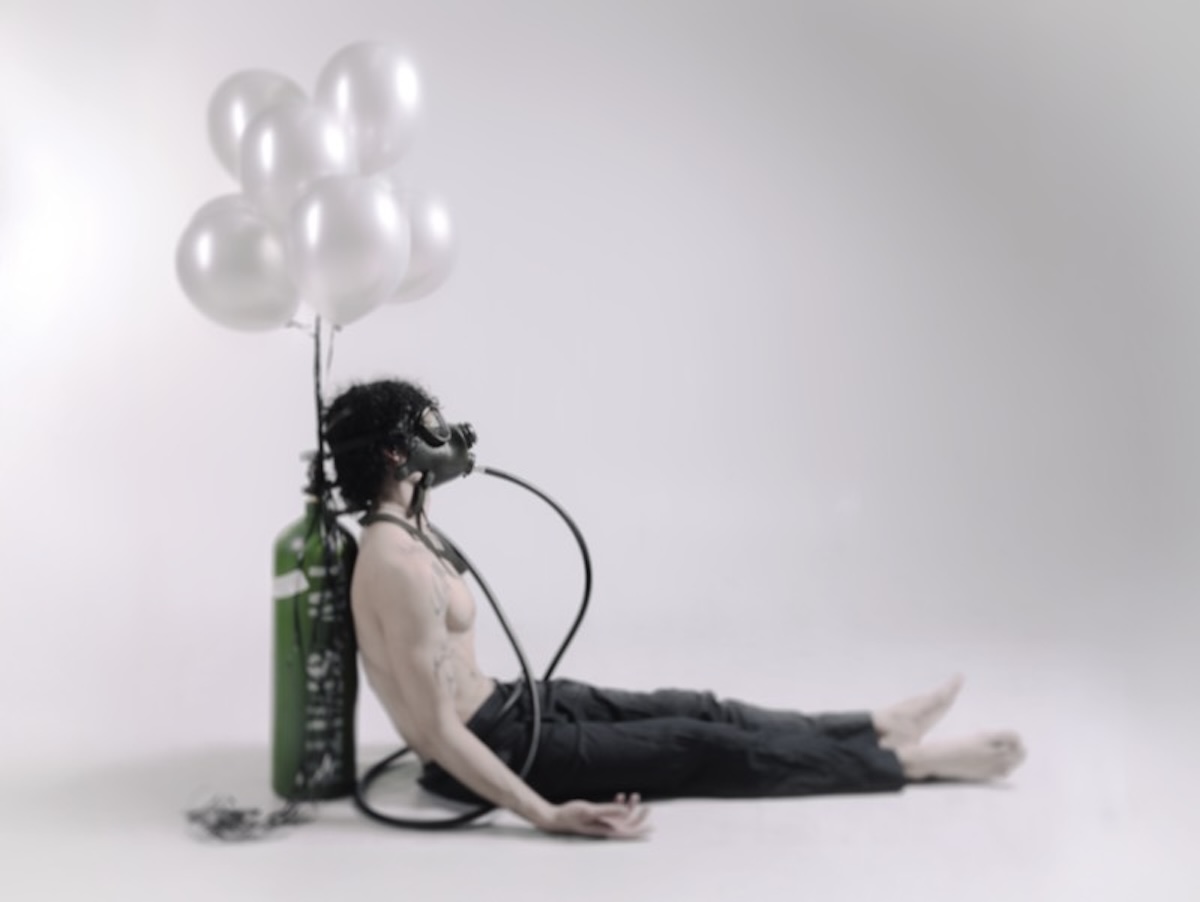
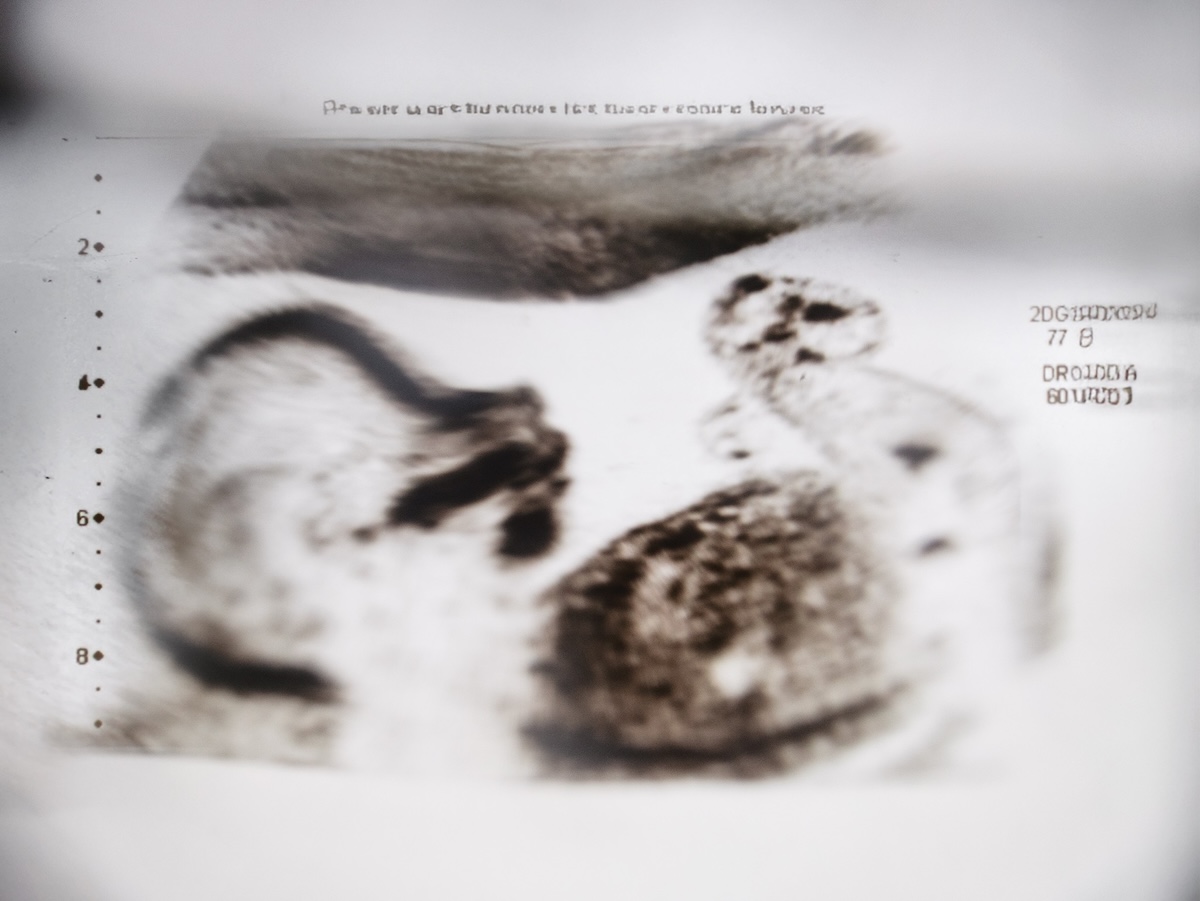


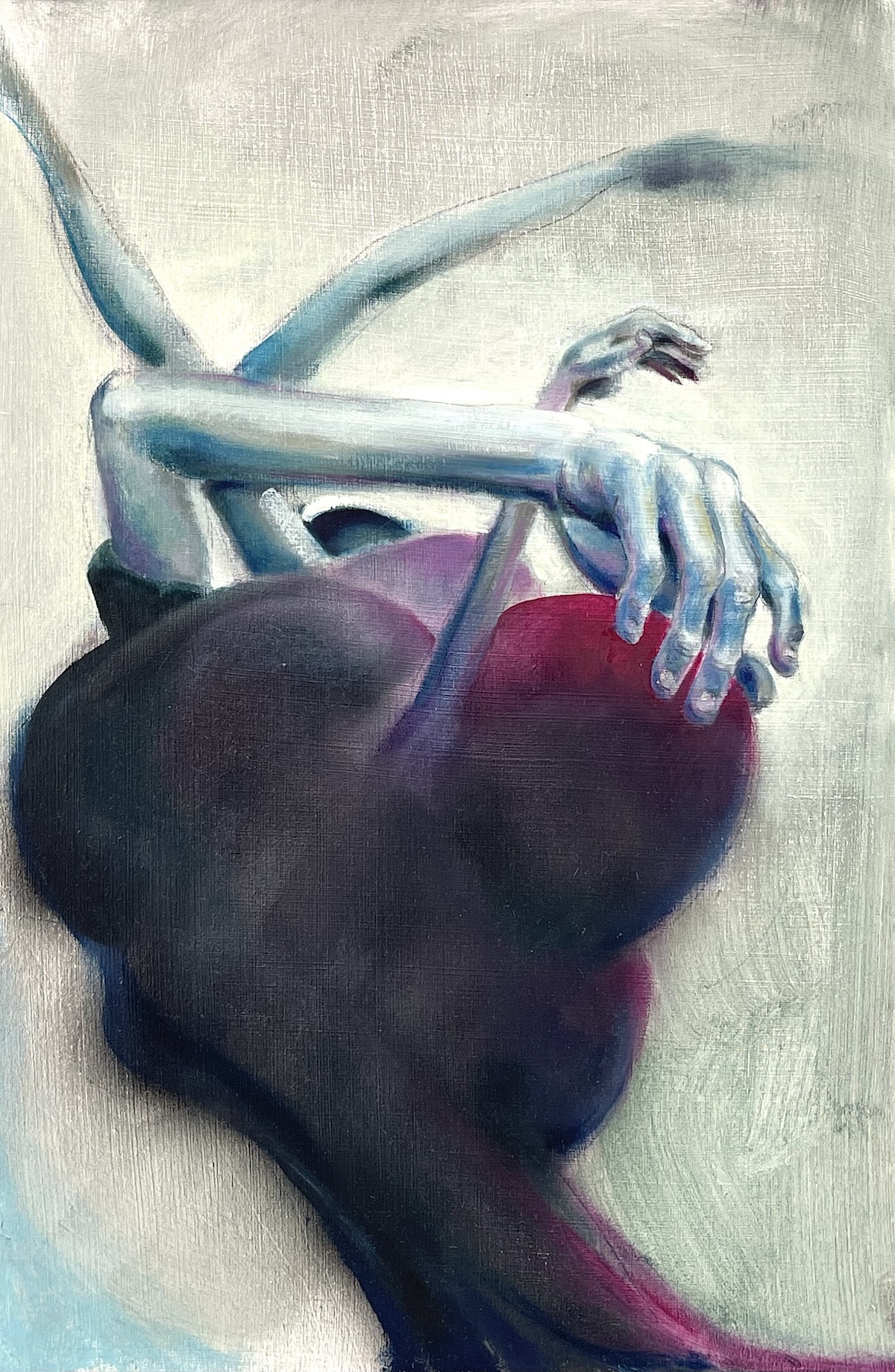
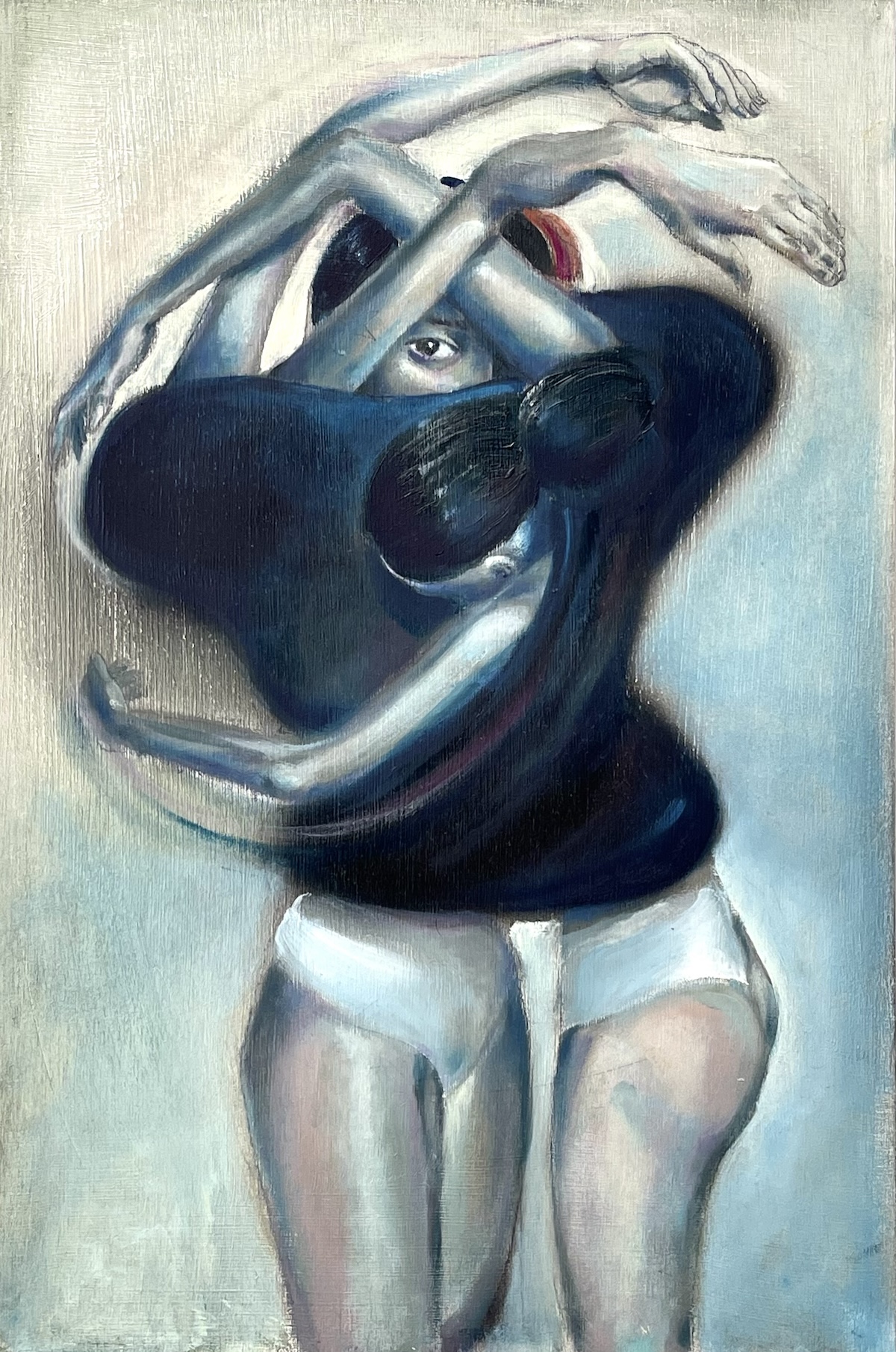
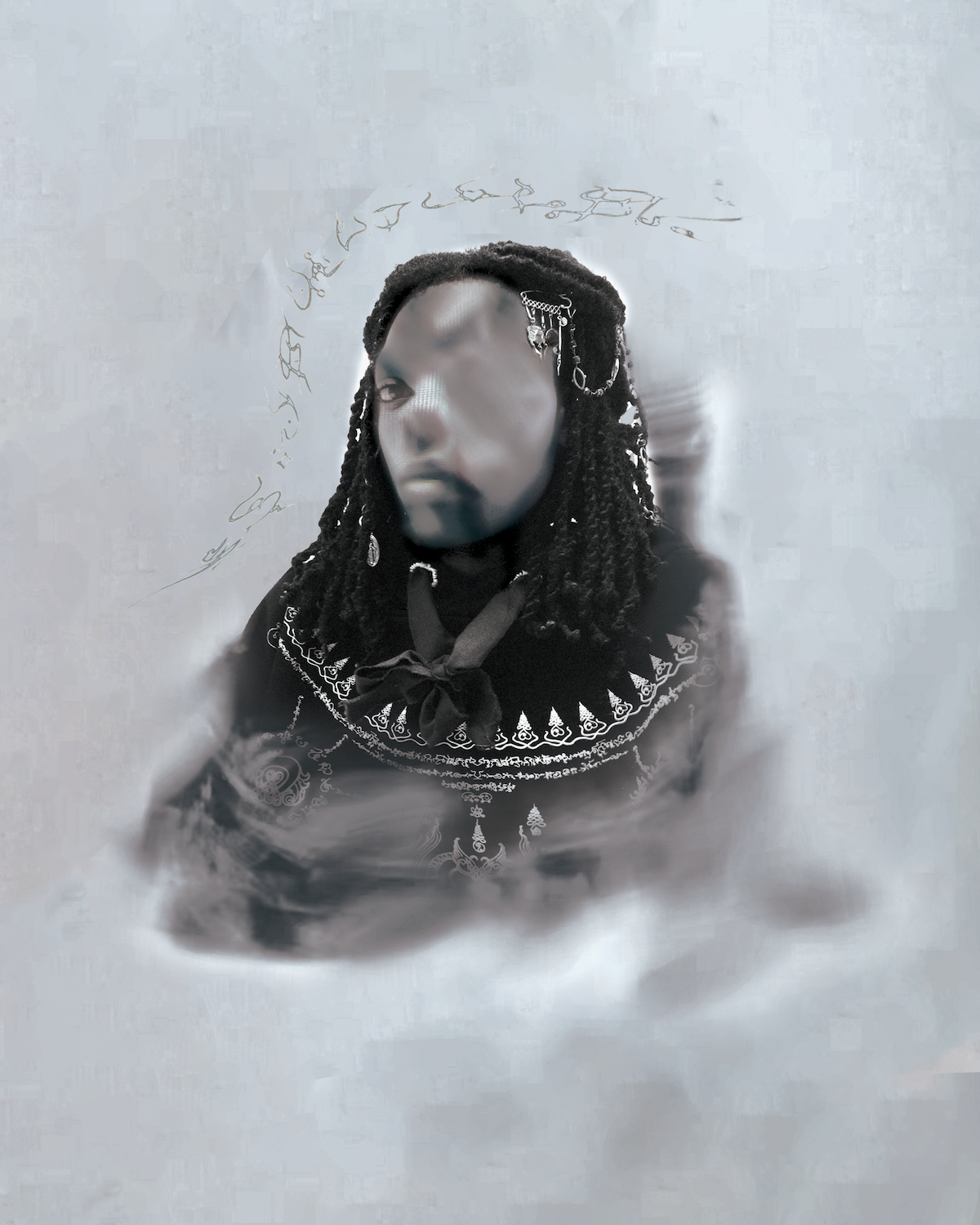
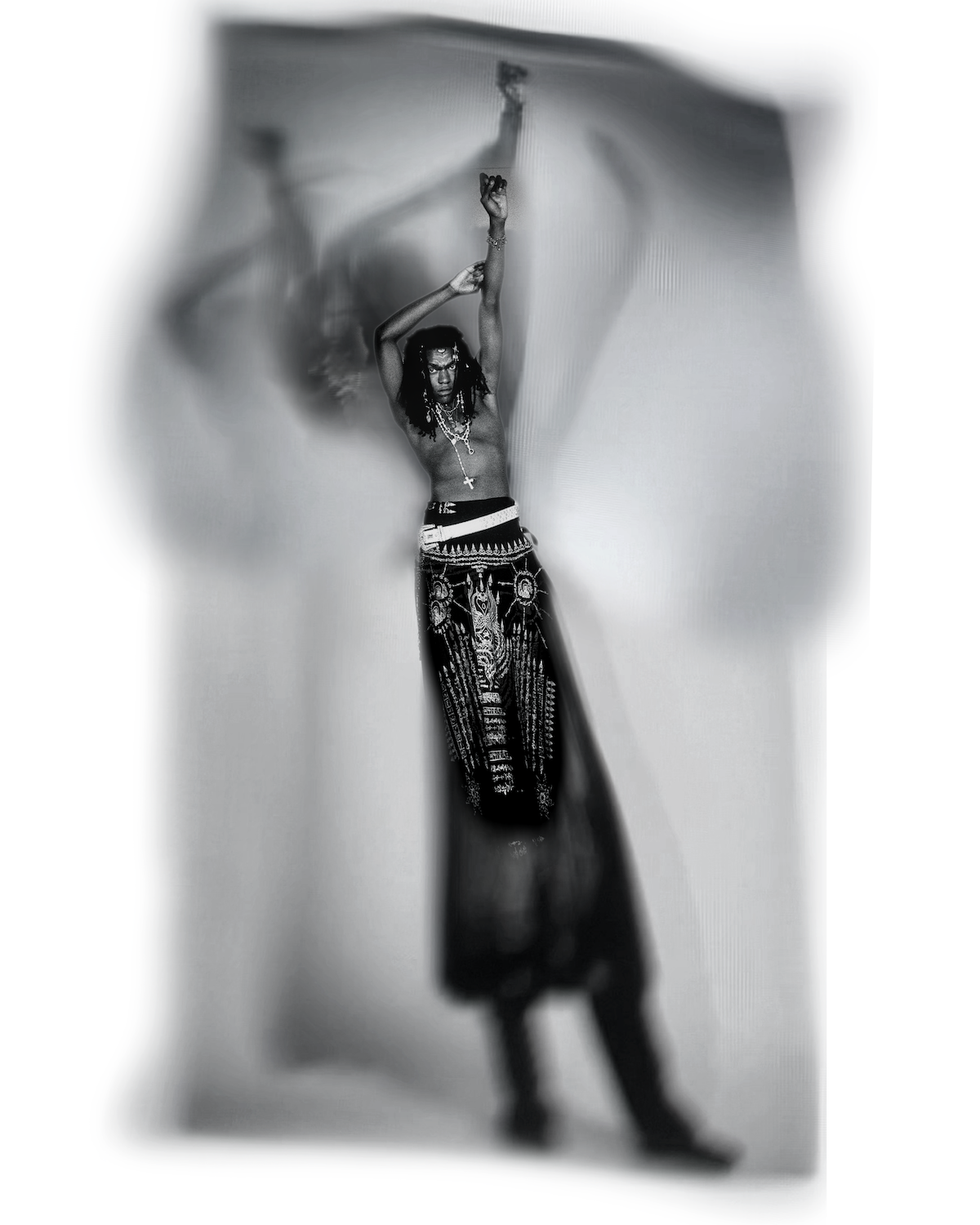


"Bad Girls" Make Their Mark
As Diaz shares in an essay that introduces the exhibition: “The anesthetic flash of the shutter freezes time and brings the doll a second from death so she can stake claim. Whatever is achieved in a photograph is hers. Here’s the proof.”
Bad Girls is an exhibition about queer and trans expression, about the bonds of platonic intimacy – just see Martine and Dara (Fire Island) – and an exploration into one’s relationship with sensuality and bodily freedom. \
A particularly special portion of the show manifests in the solemn gaze of Fern Cerezo in Premiere and Audition. The self portraits, in which the figure wears both skin-tight garments and a wedding-style gown in the respective photographs, greet viewers at the front of the gallery with a solemn gaze. The works are complexified by the fact that Cerezo does not allow themselves to be photographed by virtually anyone. These portraits are a practice in image ownership and reclamation, and a testament to the trust that Diaz’s artists put in her for this curatorial project.
Aside from Cerezo, the exhibition also features works from Drake Carr, Sebastian Acero, Jan Anthonio Diaz, Chuy Medina, Jessica Sofia Mitrani, Rey Rivera, and Cruz Valdez in a melee of self-portraits, on-location produced content, and slices of life that include the curator smiling in repose at Fort Tilden Beach.
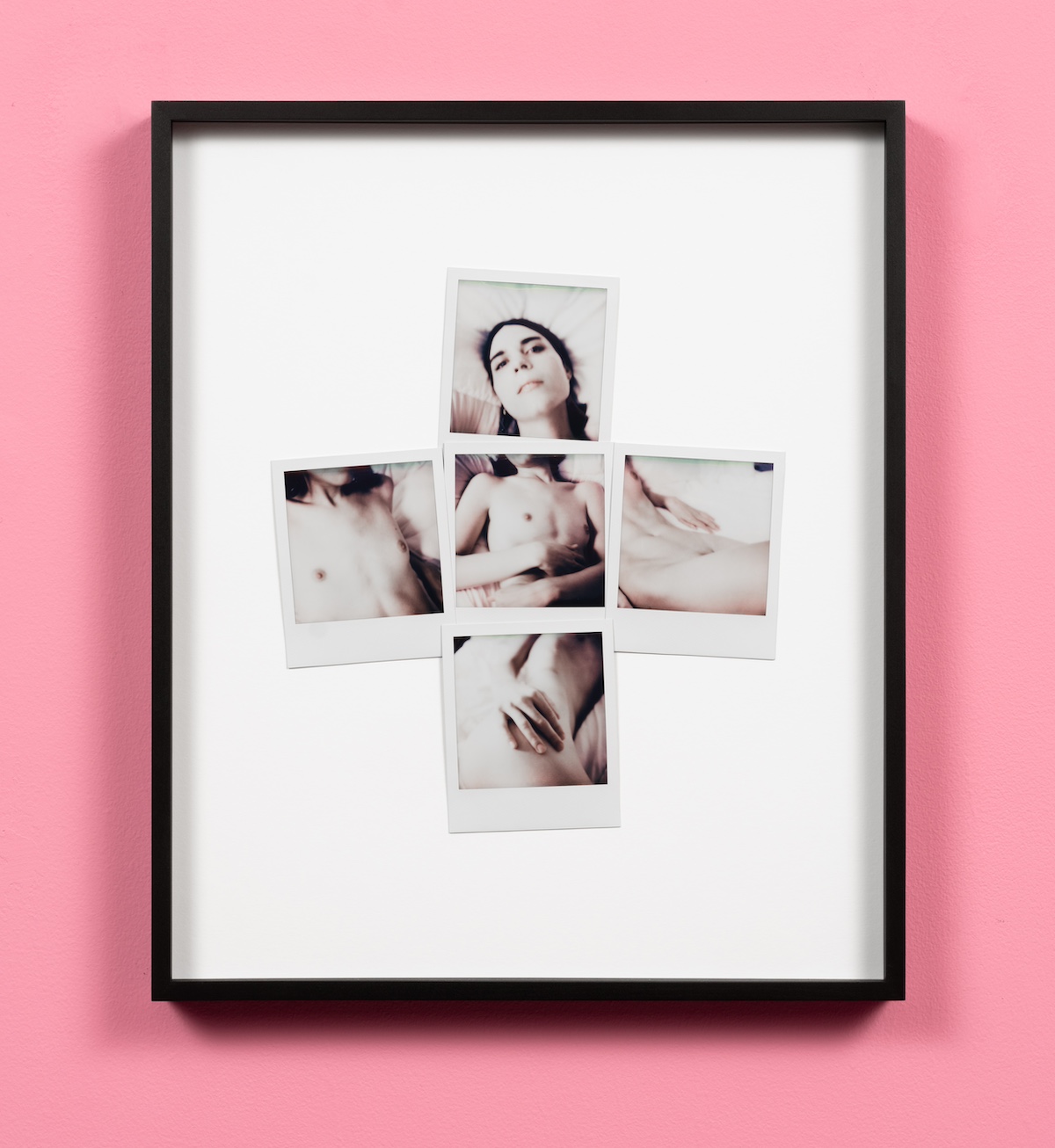
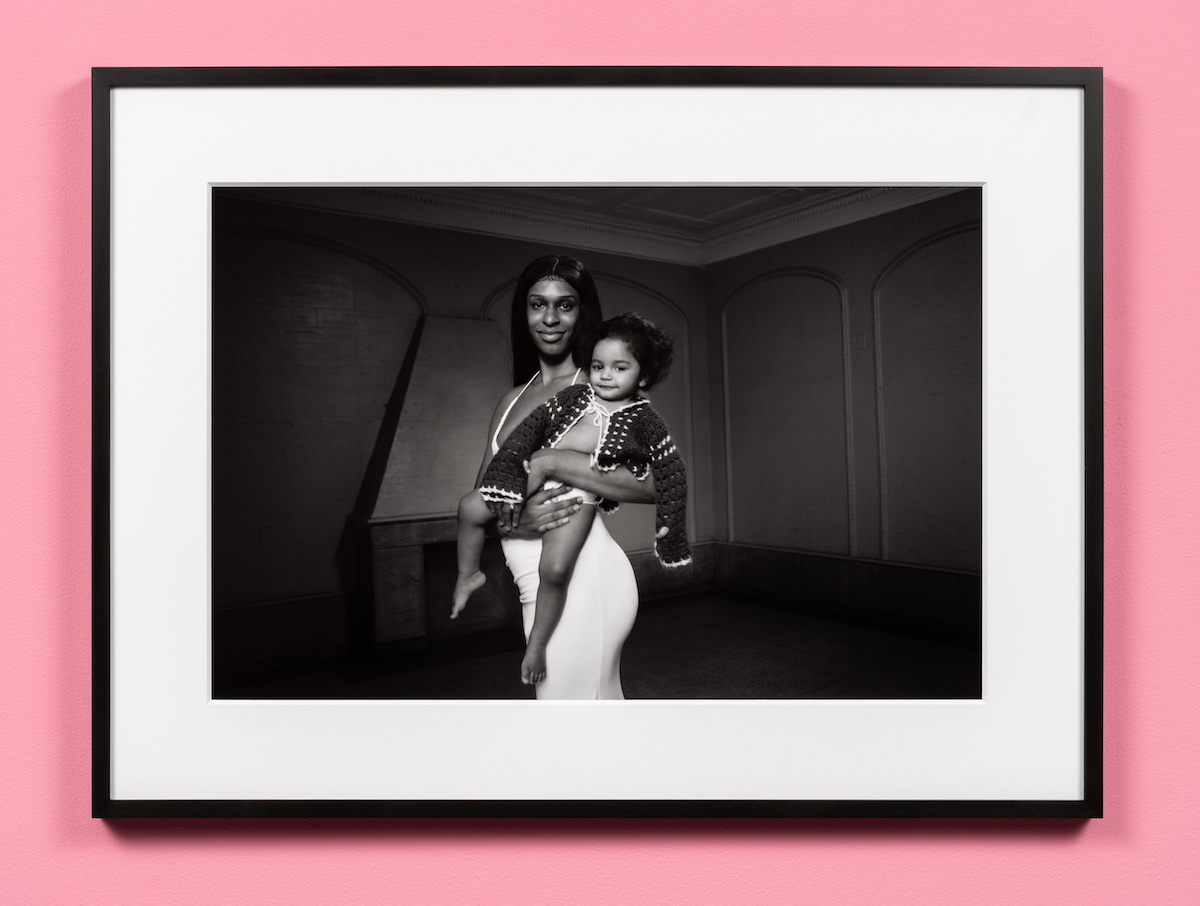
LEFT: Sebastian Acero, Cruz, 2024. Polaroid collage. Framed dimensions: 18.375 x 15.4375 in. Edition of 1.
RIGHT: Jan Anthonio Diaz, Mother and Son, 2024. RGB print. 20 x 24 in. Framed dimensions: 22.625 x 30.4375 in. Edition of 3
The project was born out of a wealth of influences, many of them literary. In a show preview, Diaz explores Jean Genet’s Our Lady Of The Flowers (“a very brutal story of queer, gay, and trans people that is somehow very optimistic,”) as well as Camilla Sosa Villada’s Bad Girls, a chronicle of a group of trans sex workers in Córdoba, Argentina.
In fact, the pink house in Genet’s work is an influence for the shade that drapes the walls of the space of the show. Perhaps the gallery stands as a reimagined version of the book’s residence, a 21st century homage to the lyrical text and queer-forward messaging of the work.
Midway through our viewing, a subject of one of the works (Sebastian Acero’s Stroke featuring Karmi Pinning) drops by to hand off a corset for Diaz’s opening night ensemble. She takes one look at a photo of Crystal Renn in naked, elegant posture wearing the aforementioned shoe sculpture and gasps: “This is so gag, so major,” she says. A five-minute snapshot in pre-show logistical acrobatics, it exemplifies the place that this show holds in culture for its subjects, curator, and viewers. At OCDChinatown, a community-oriented ship steered by a fearless leader, coterie of talented artists and subjects, and commitment to a vision unleashed in force await a viewing public. How breathless, how perfect, and certainly unmissable.
Bad Girls will be on view at OCDChinatown until December 8th, 2024.
